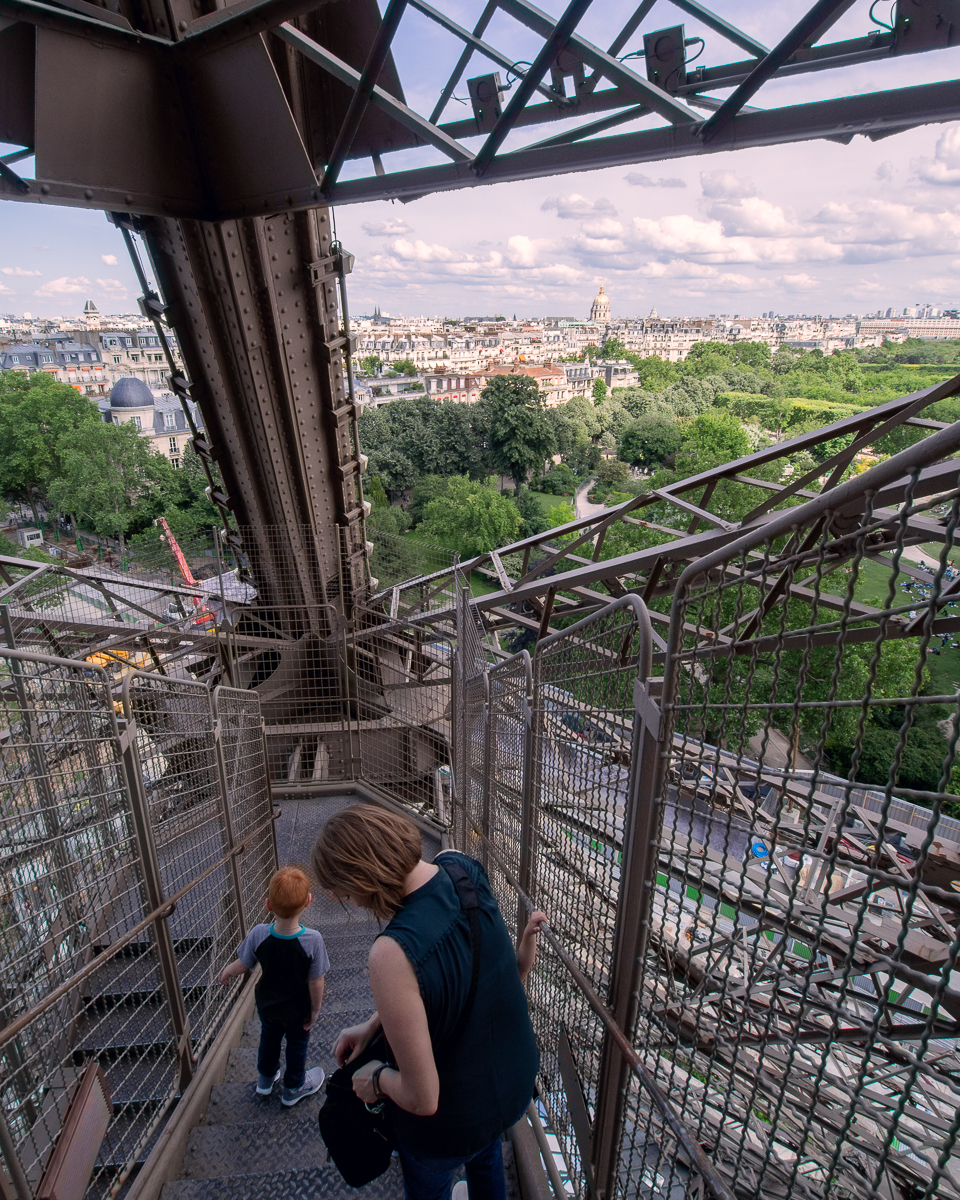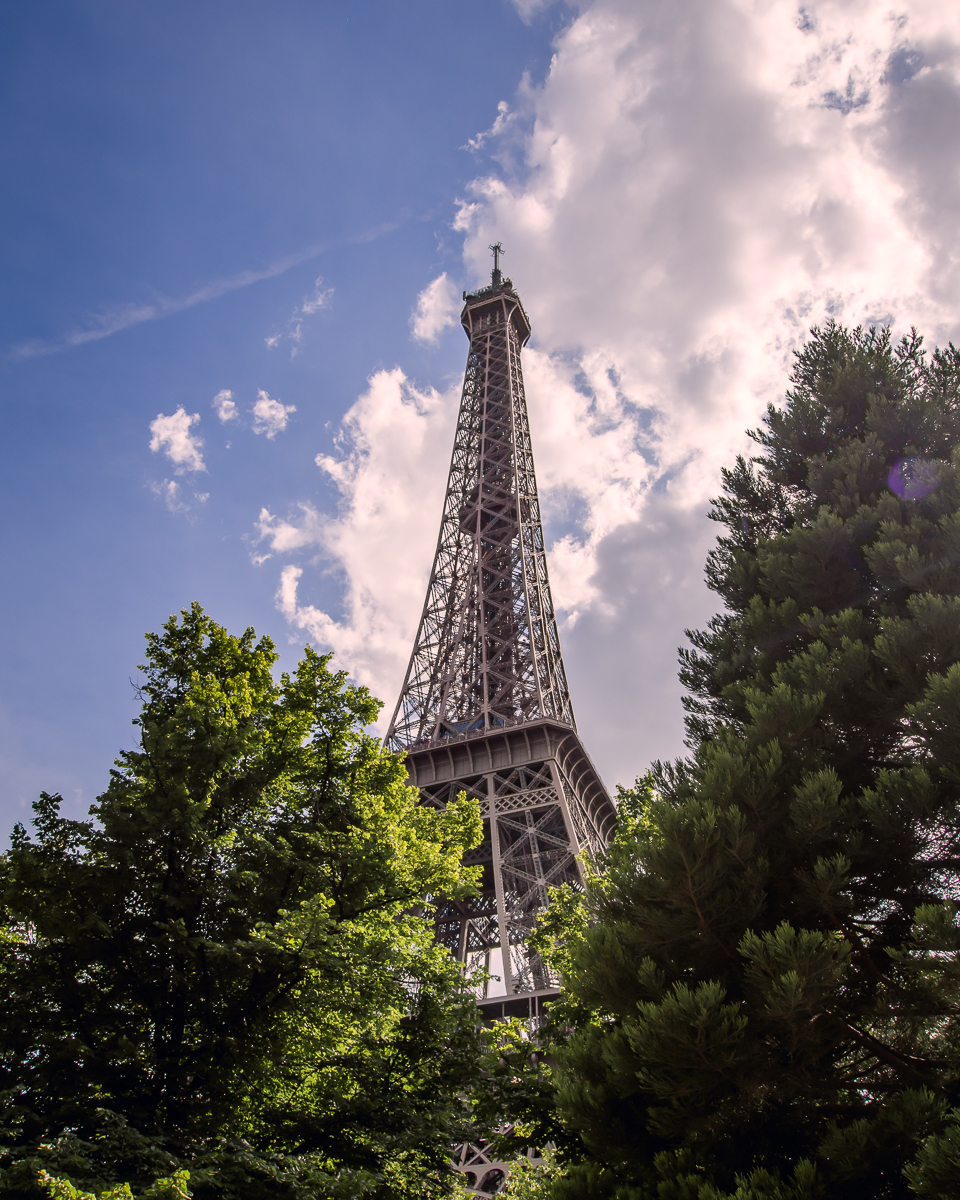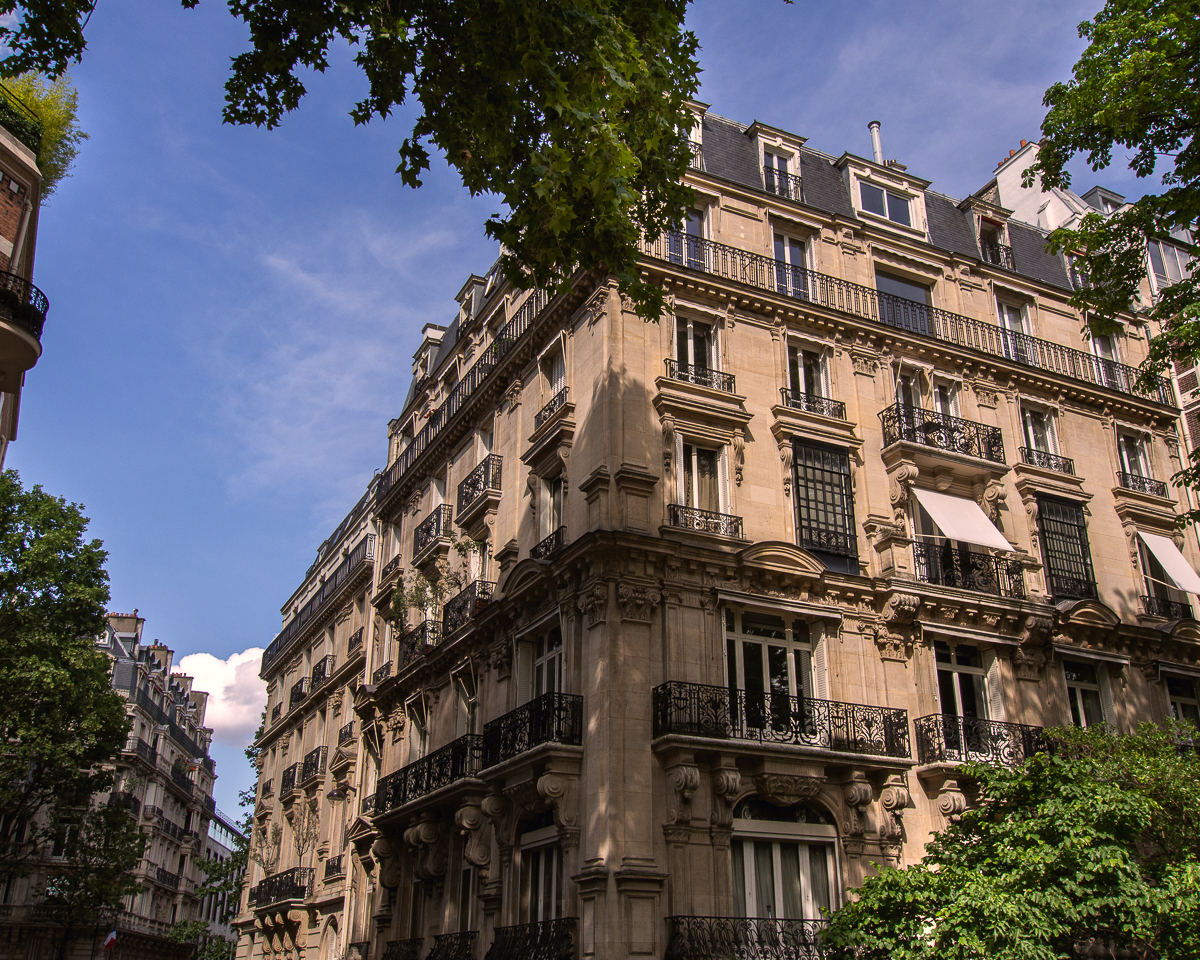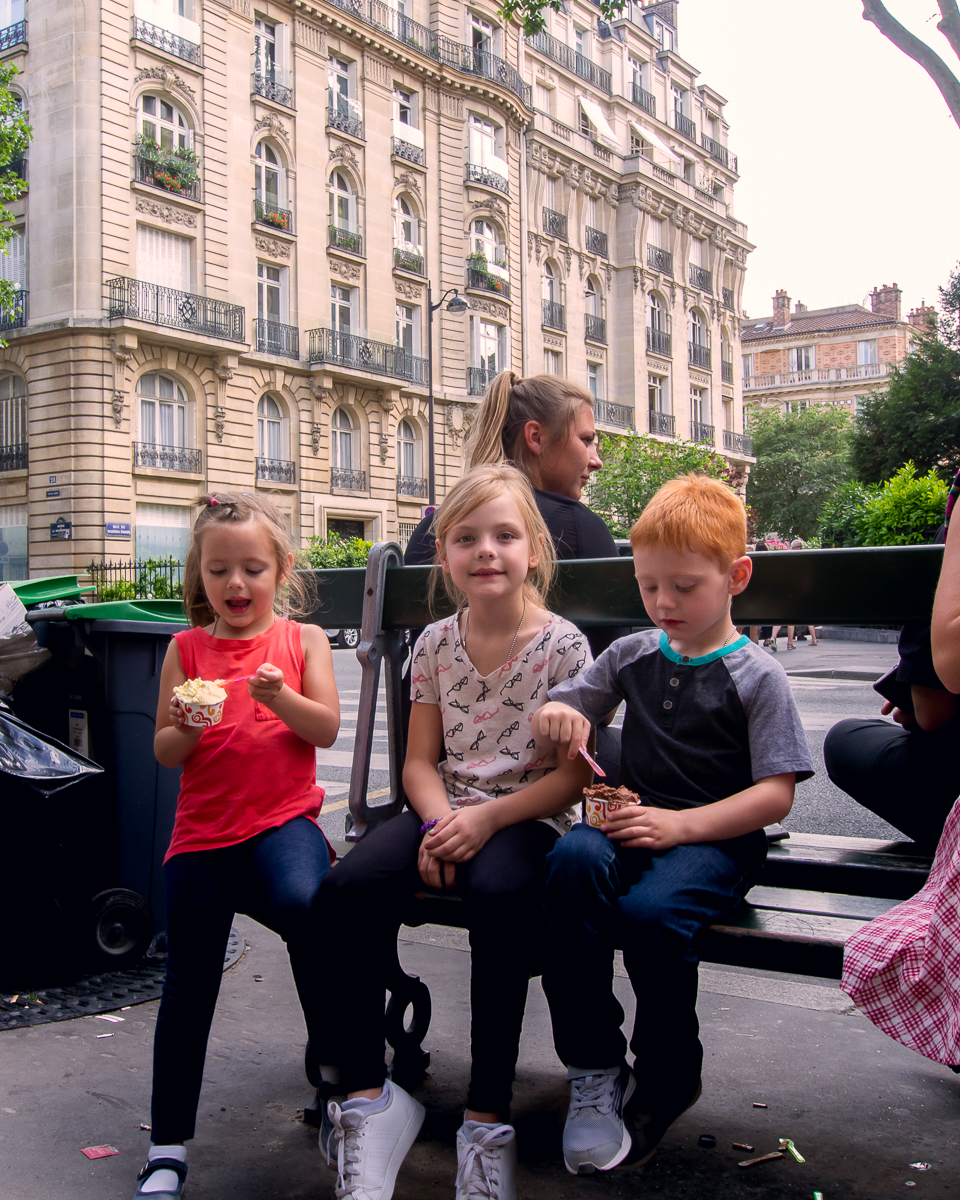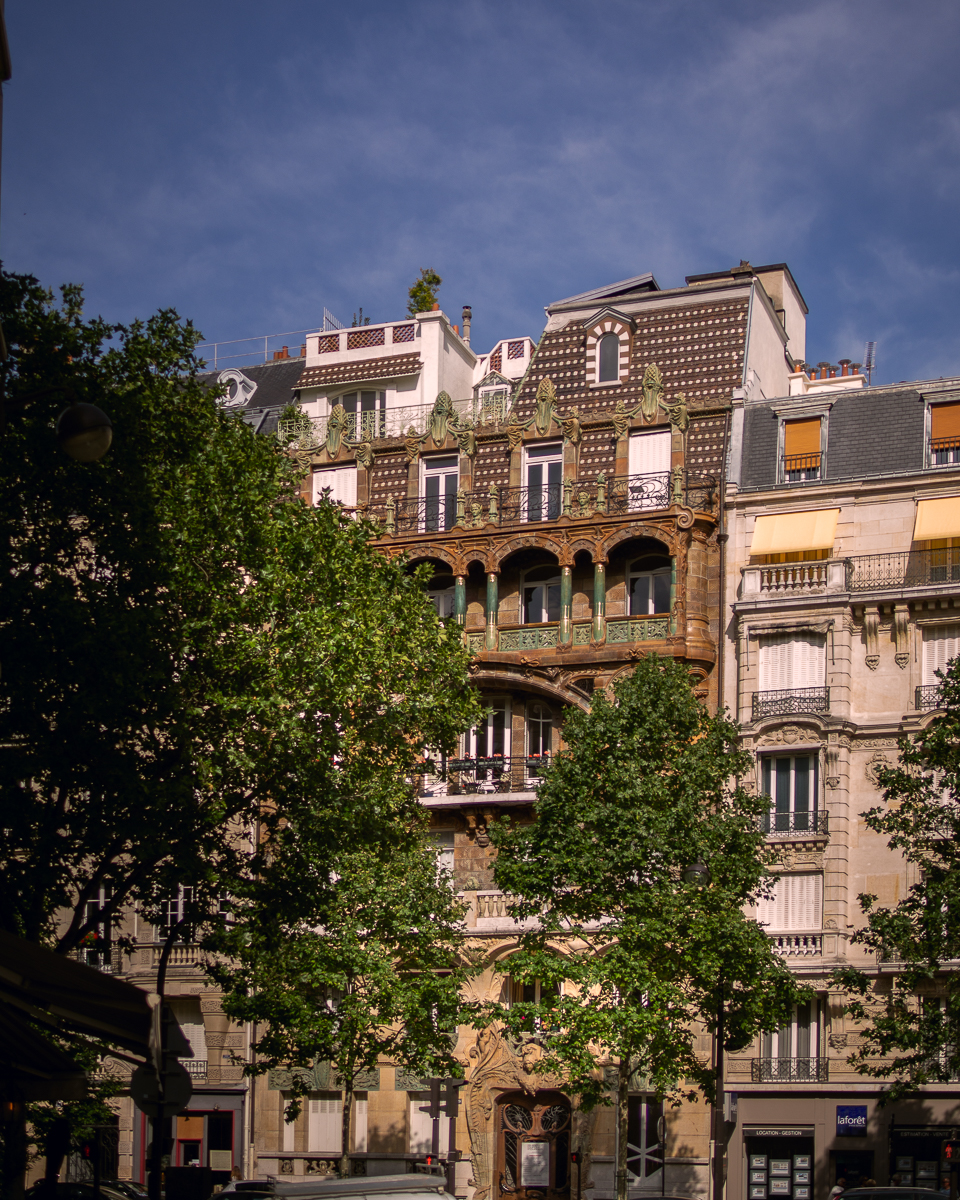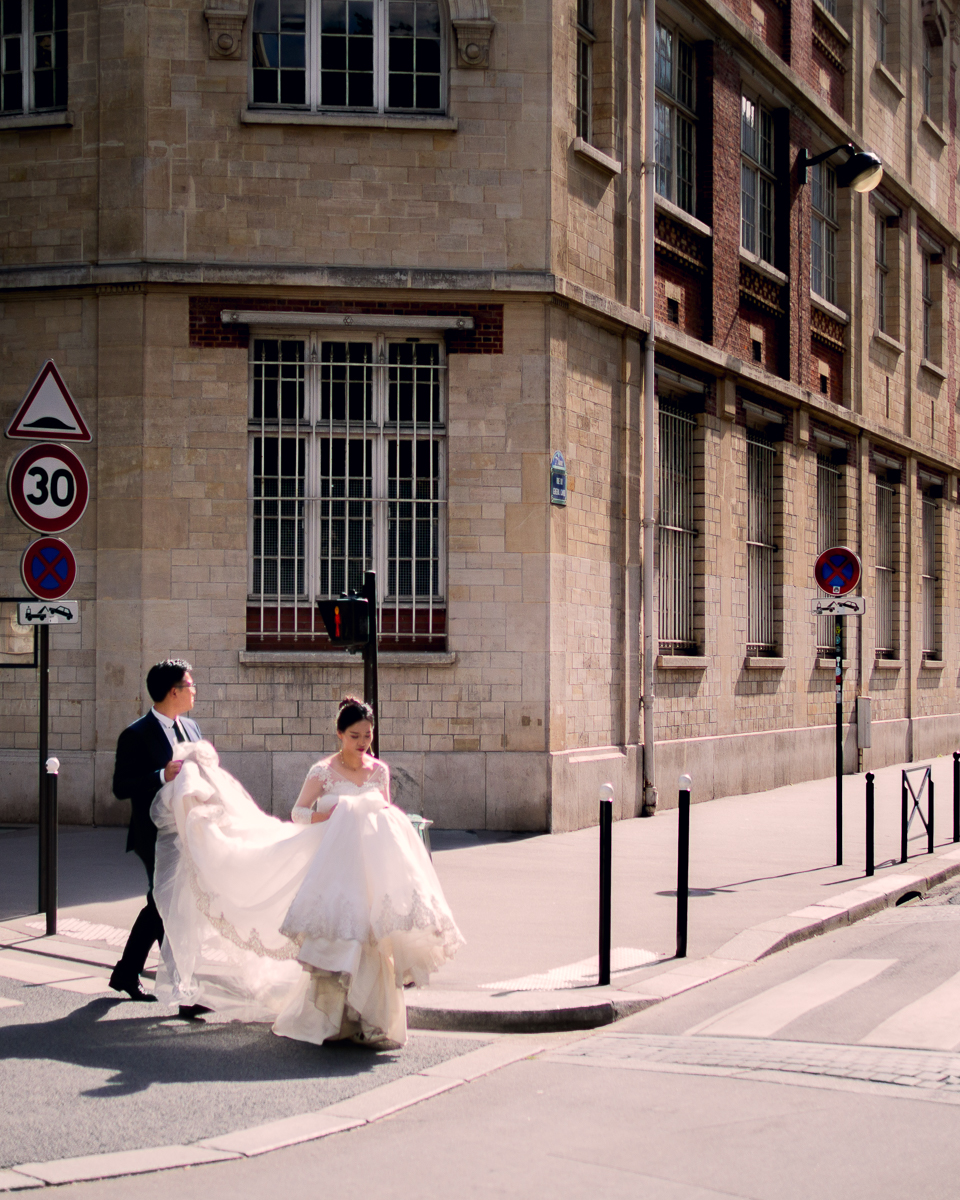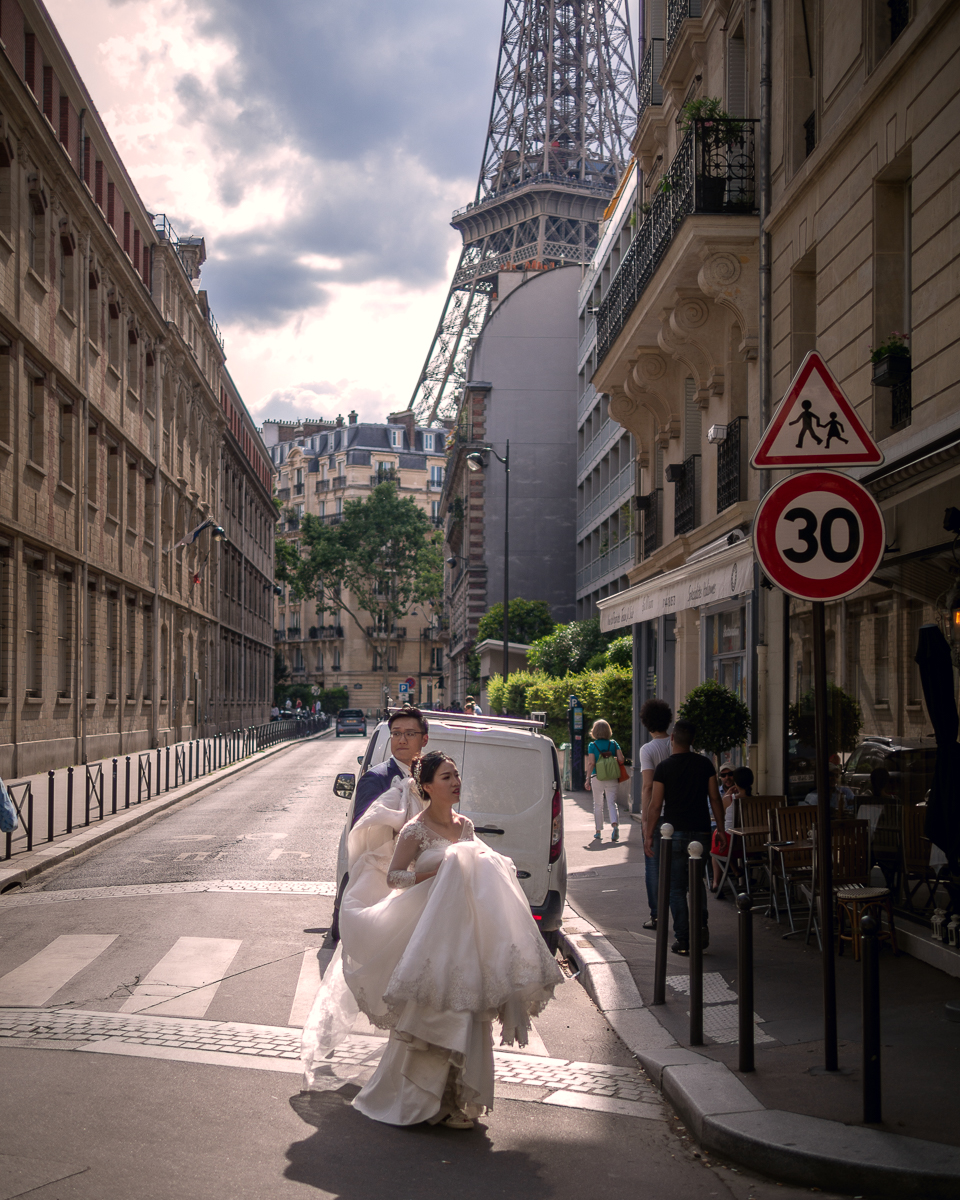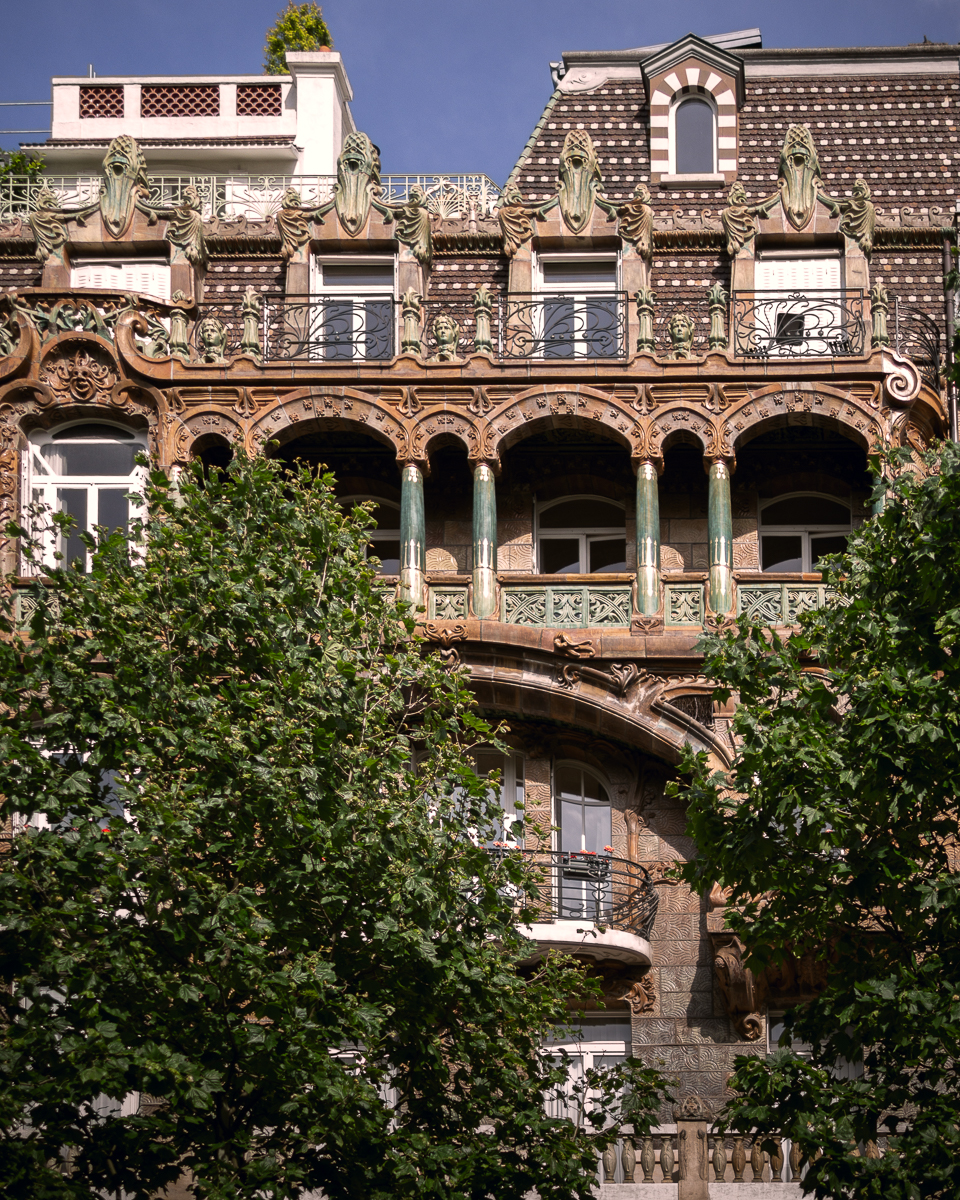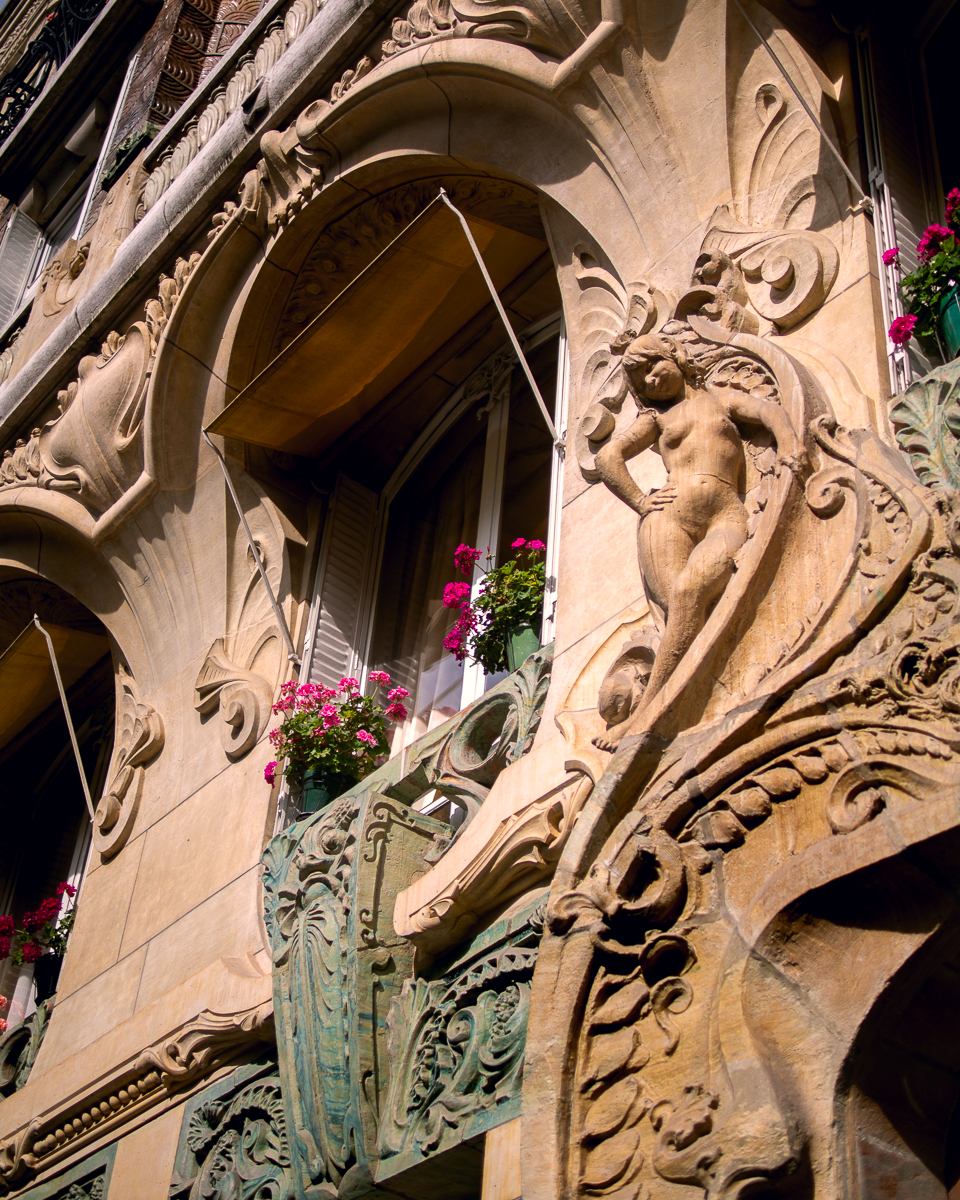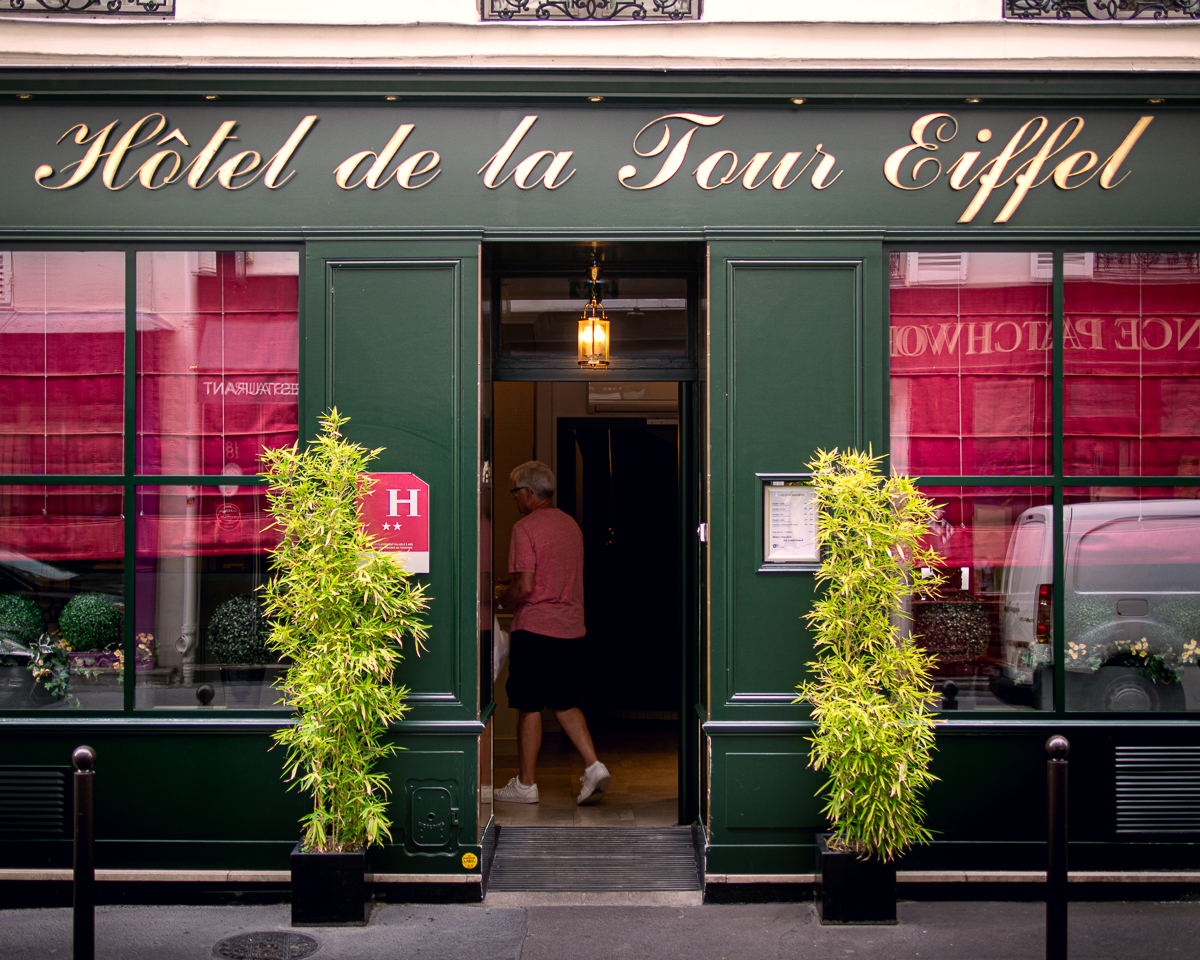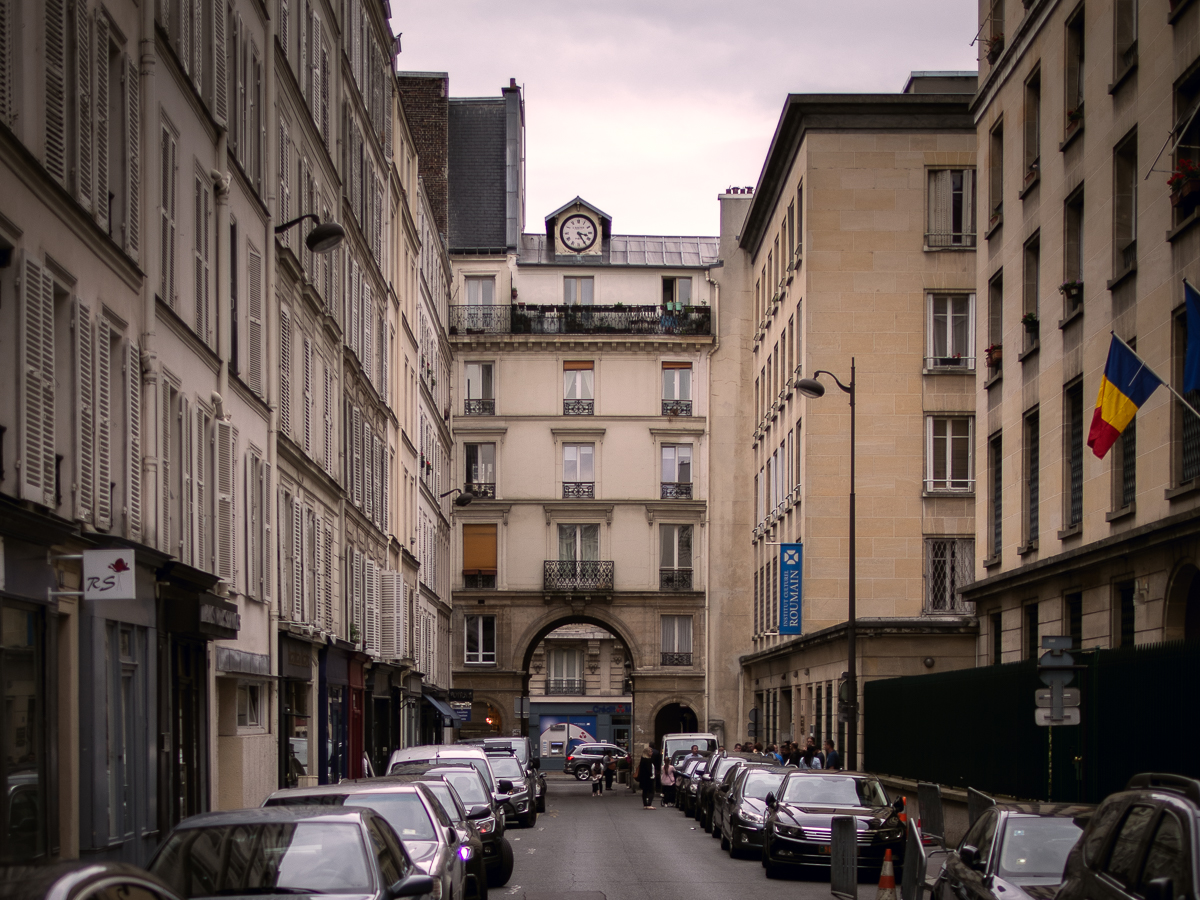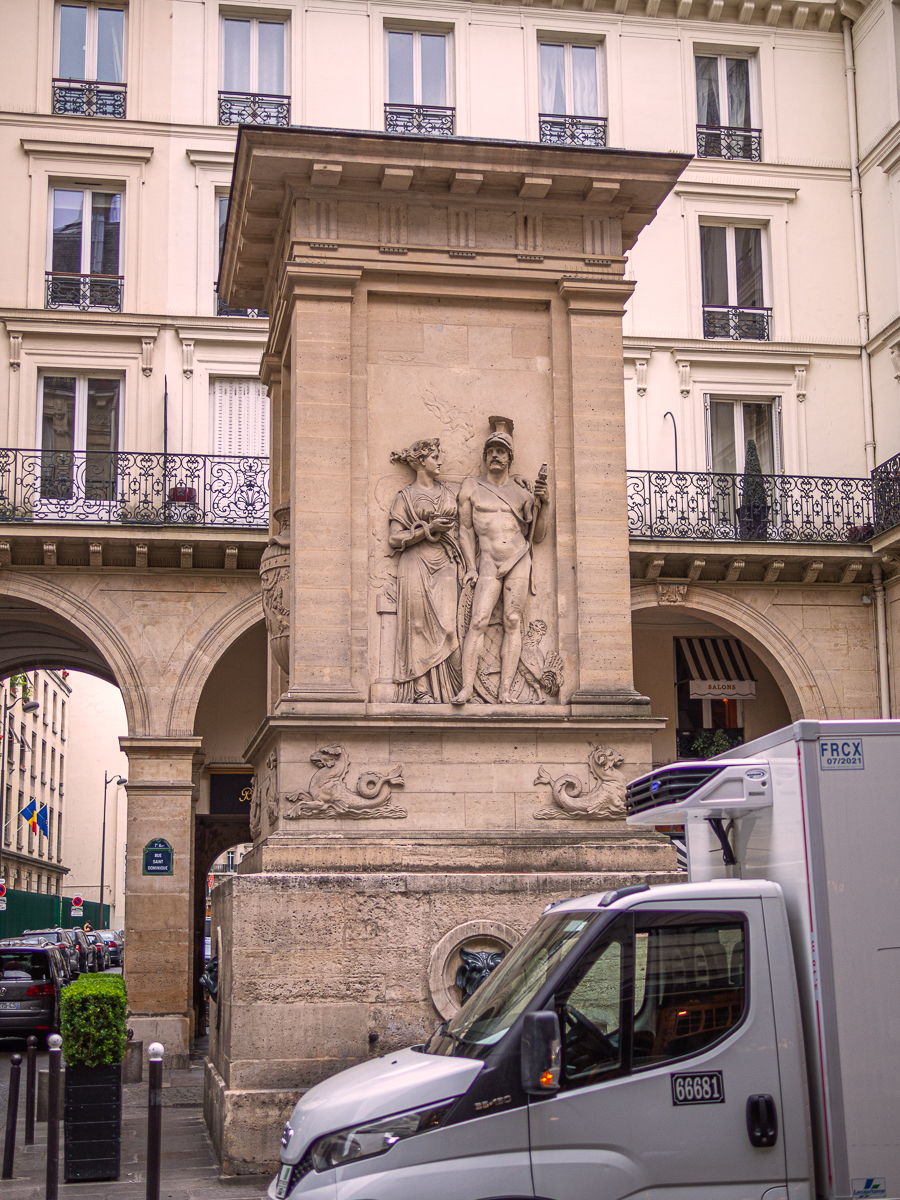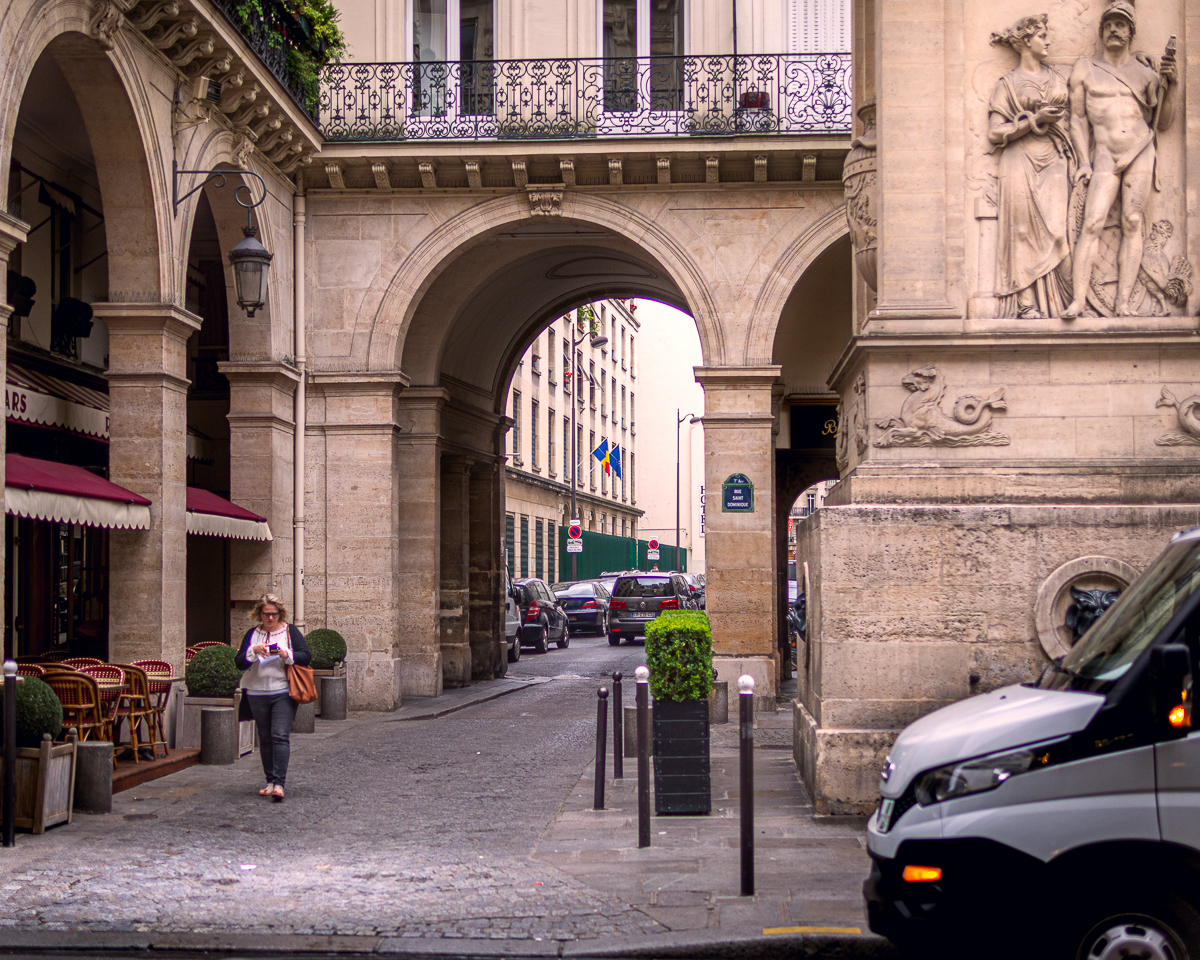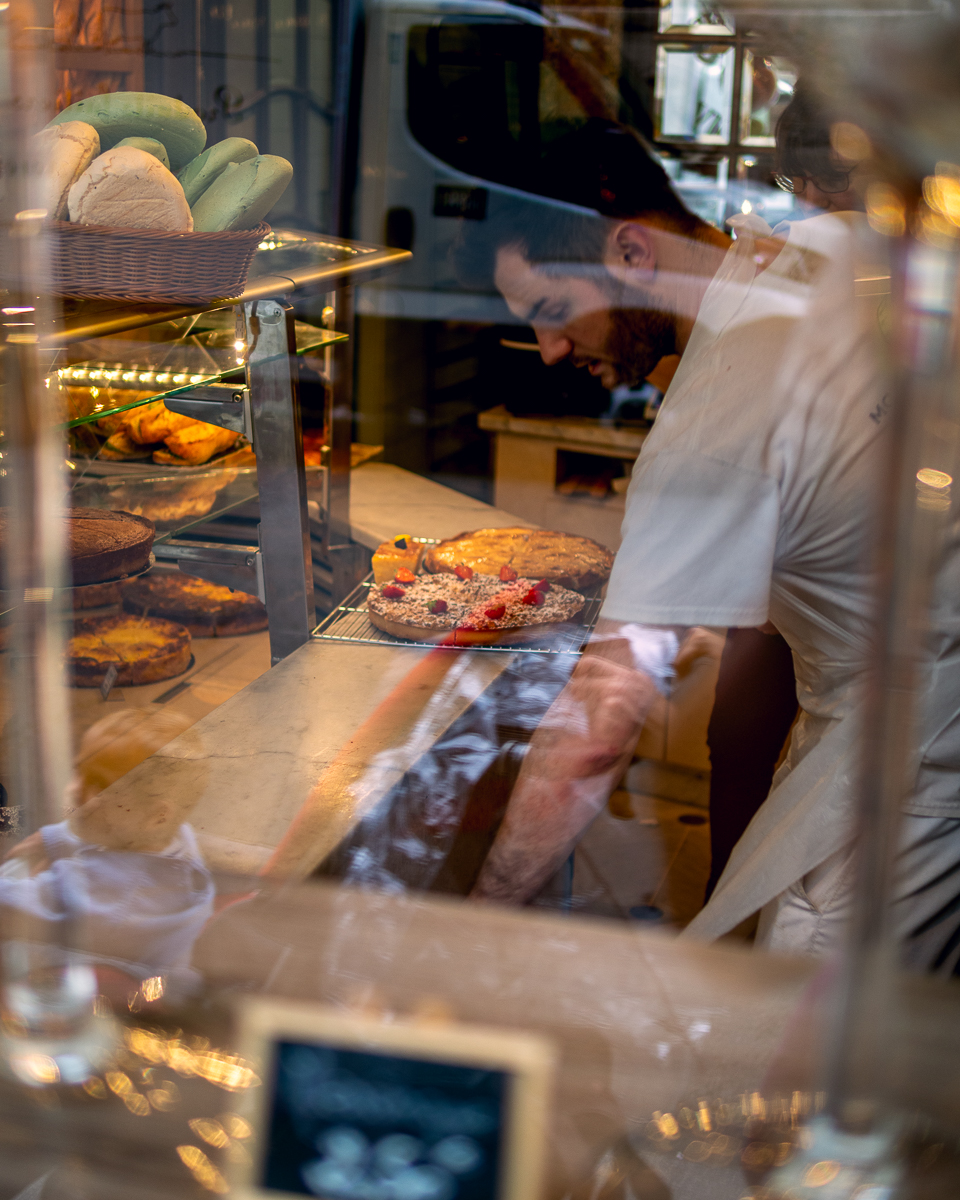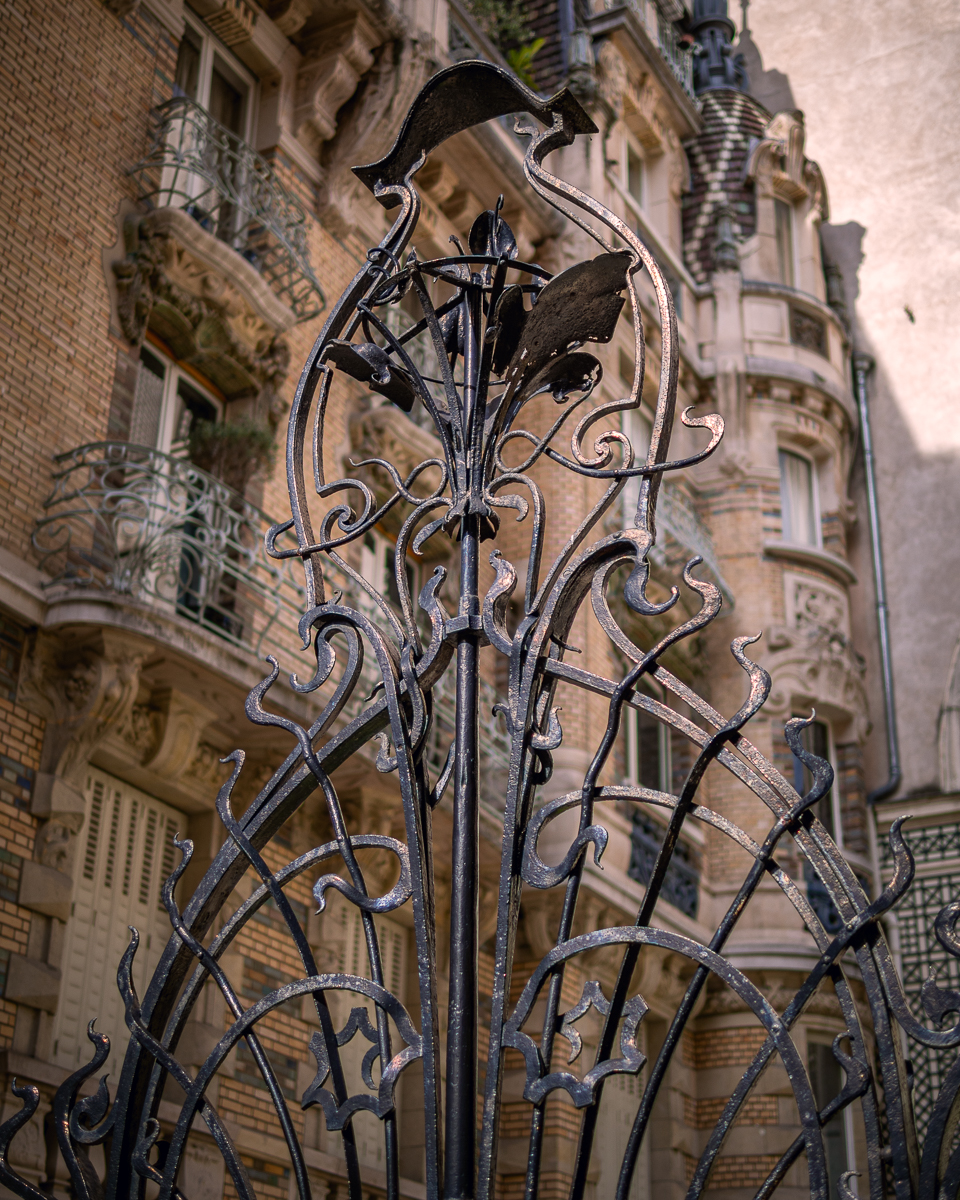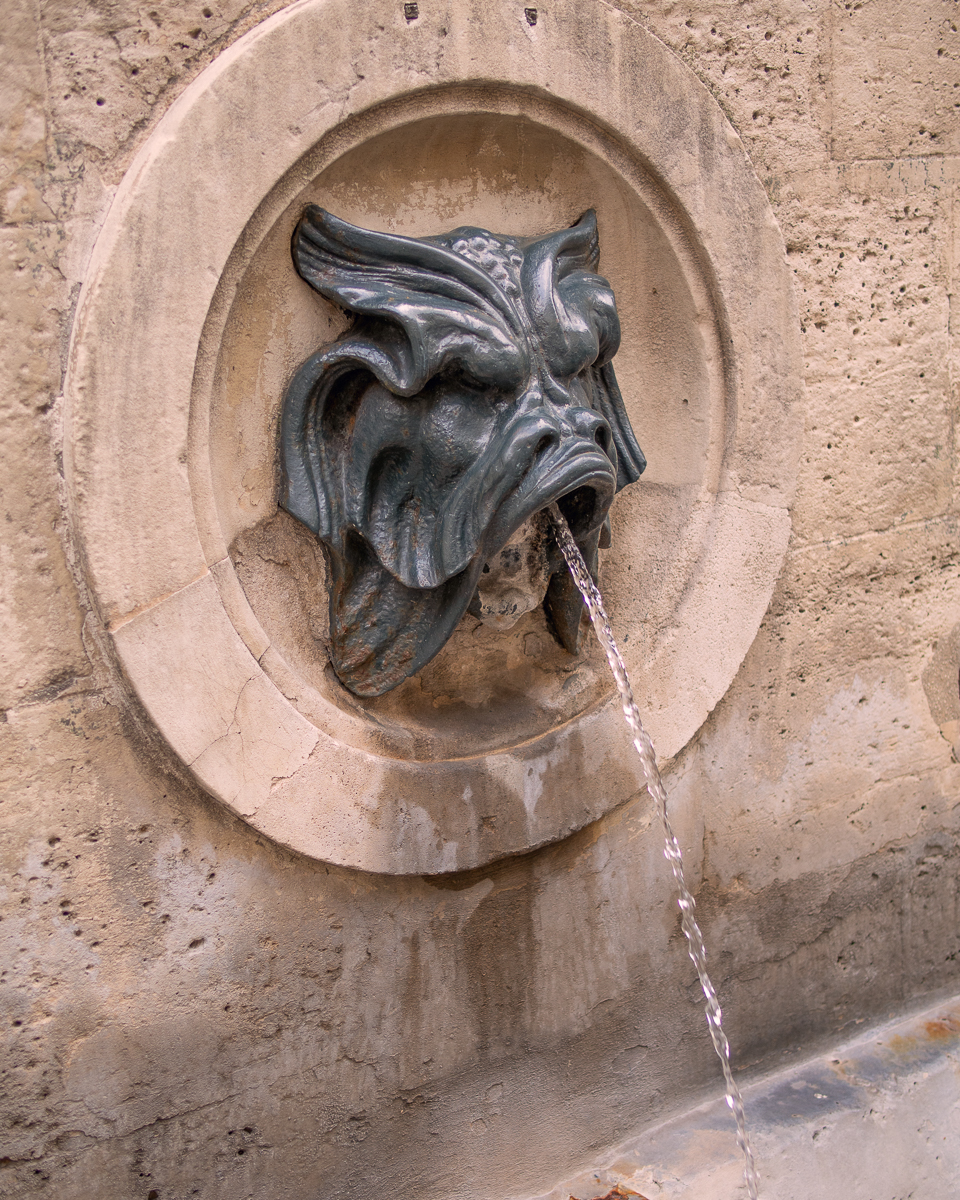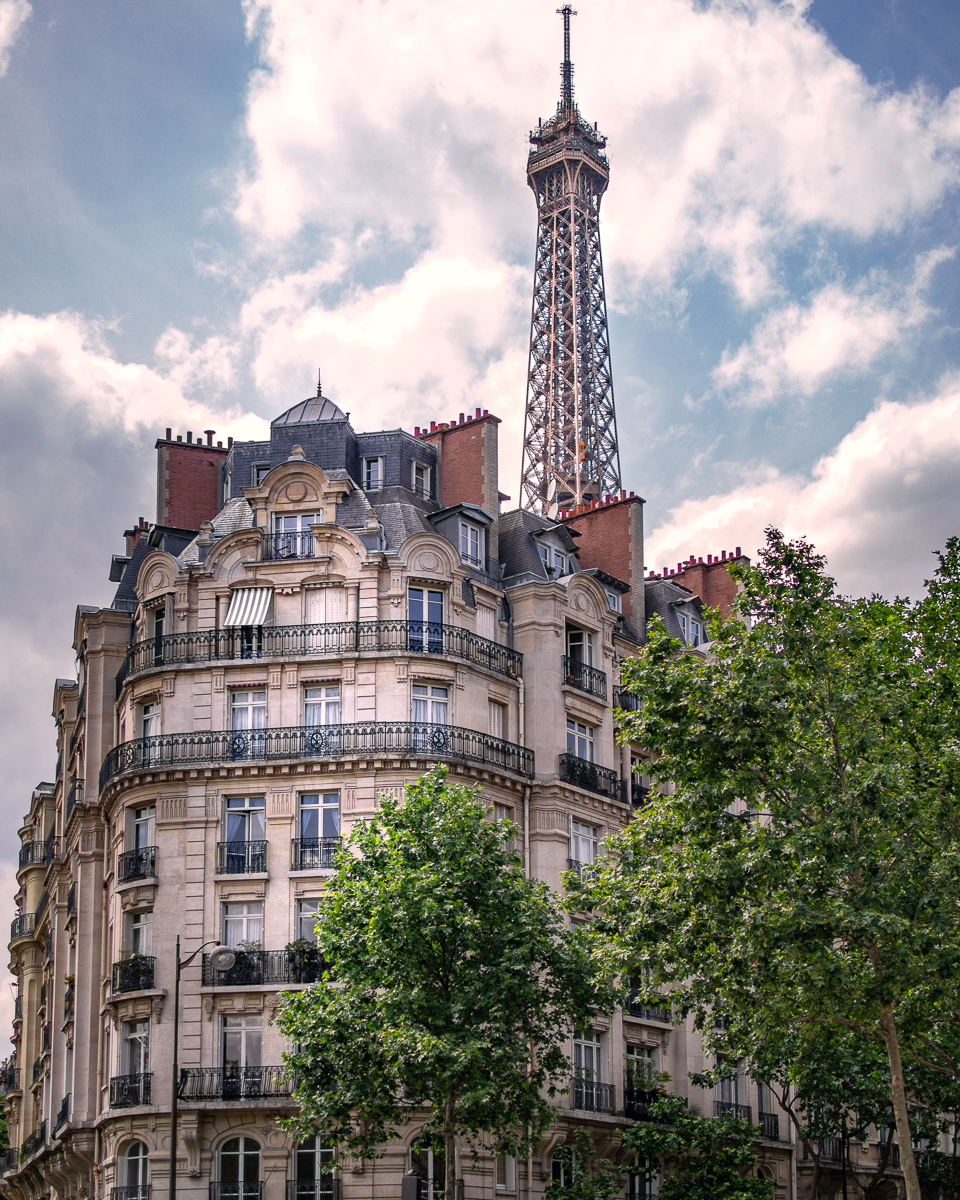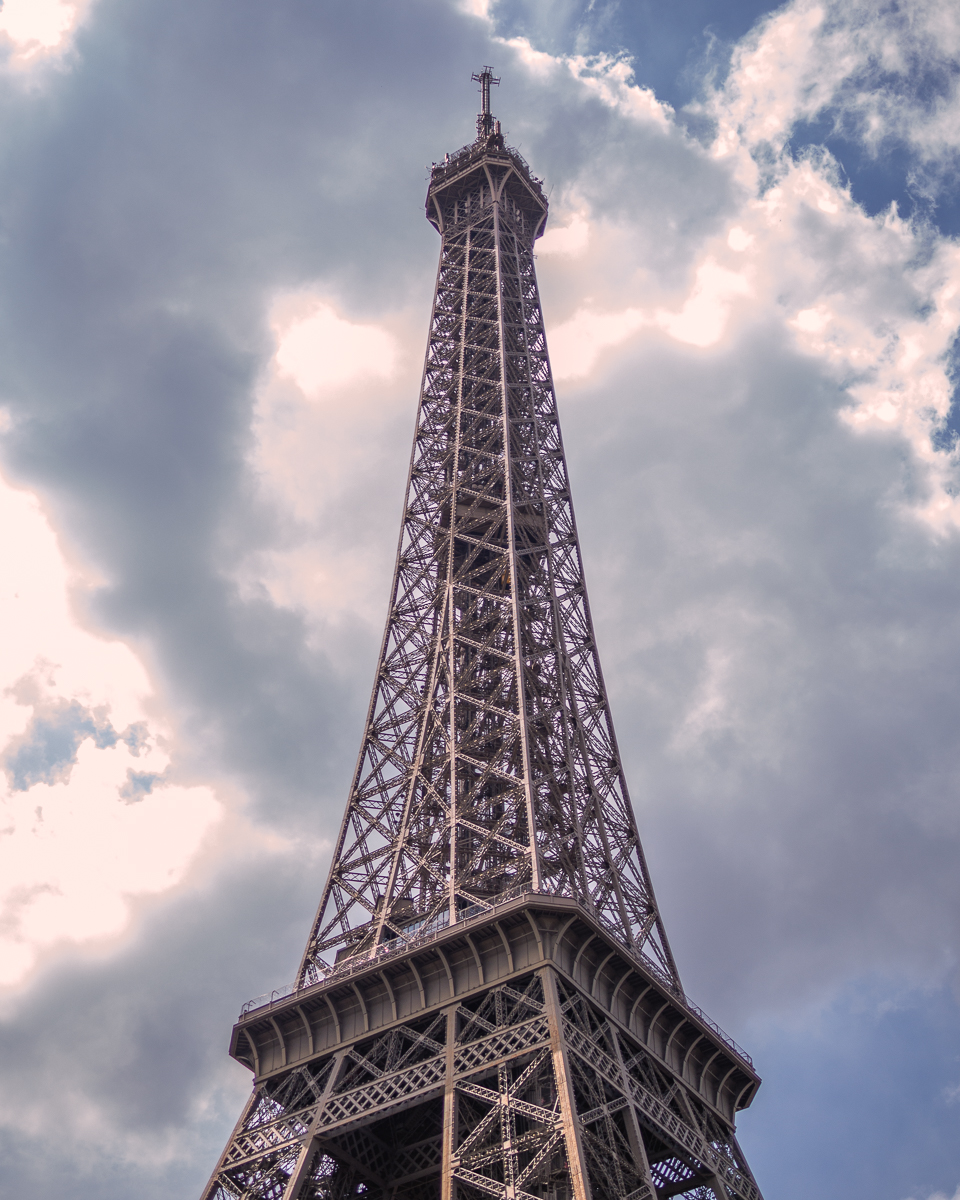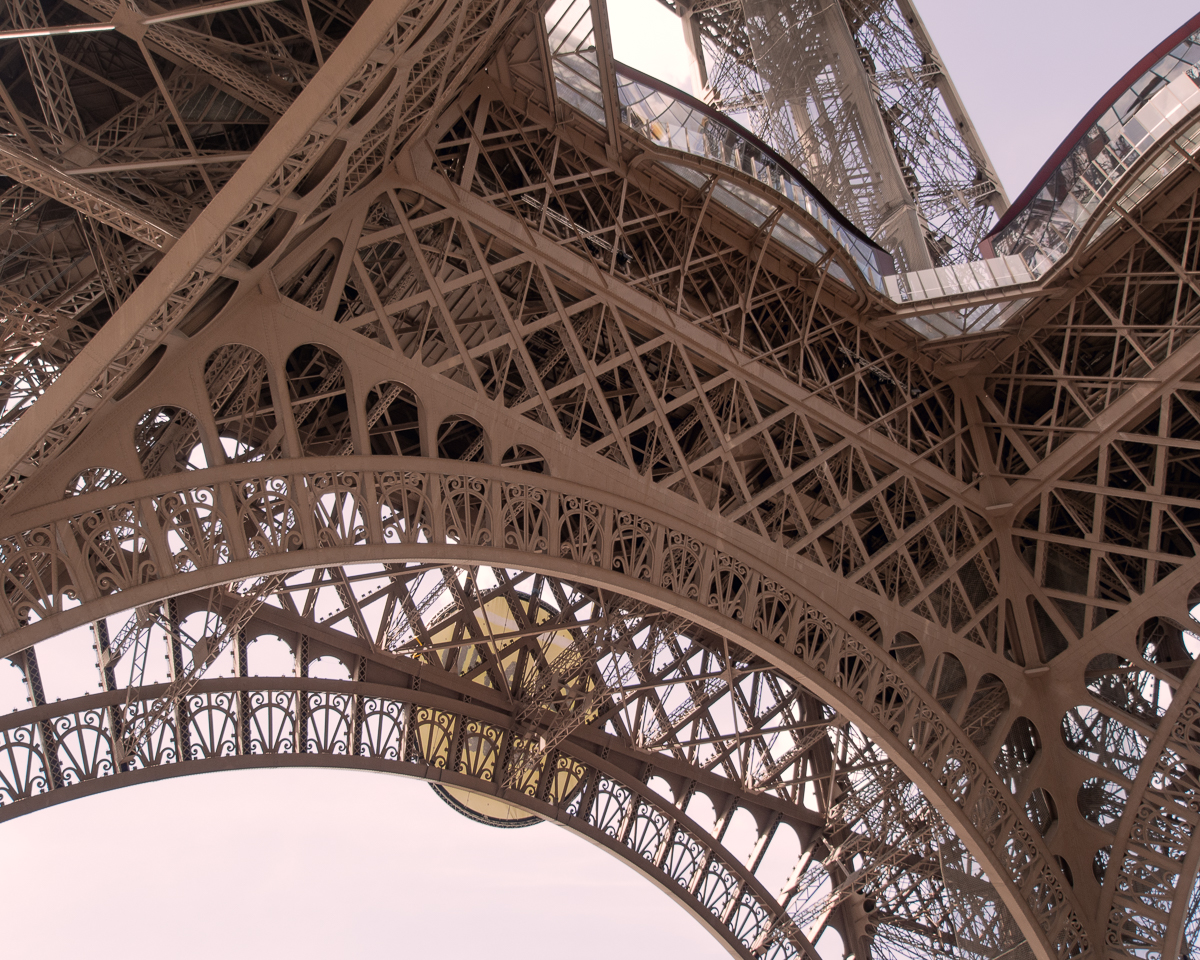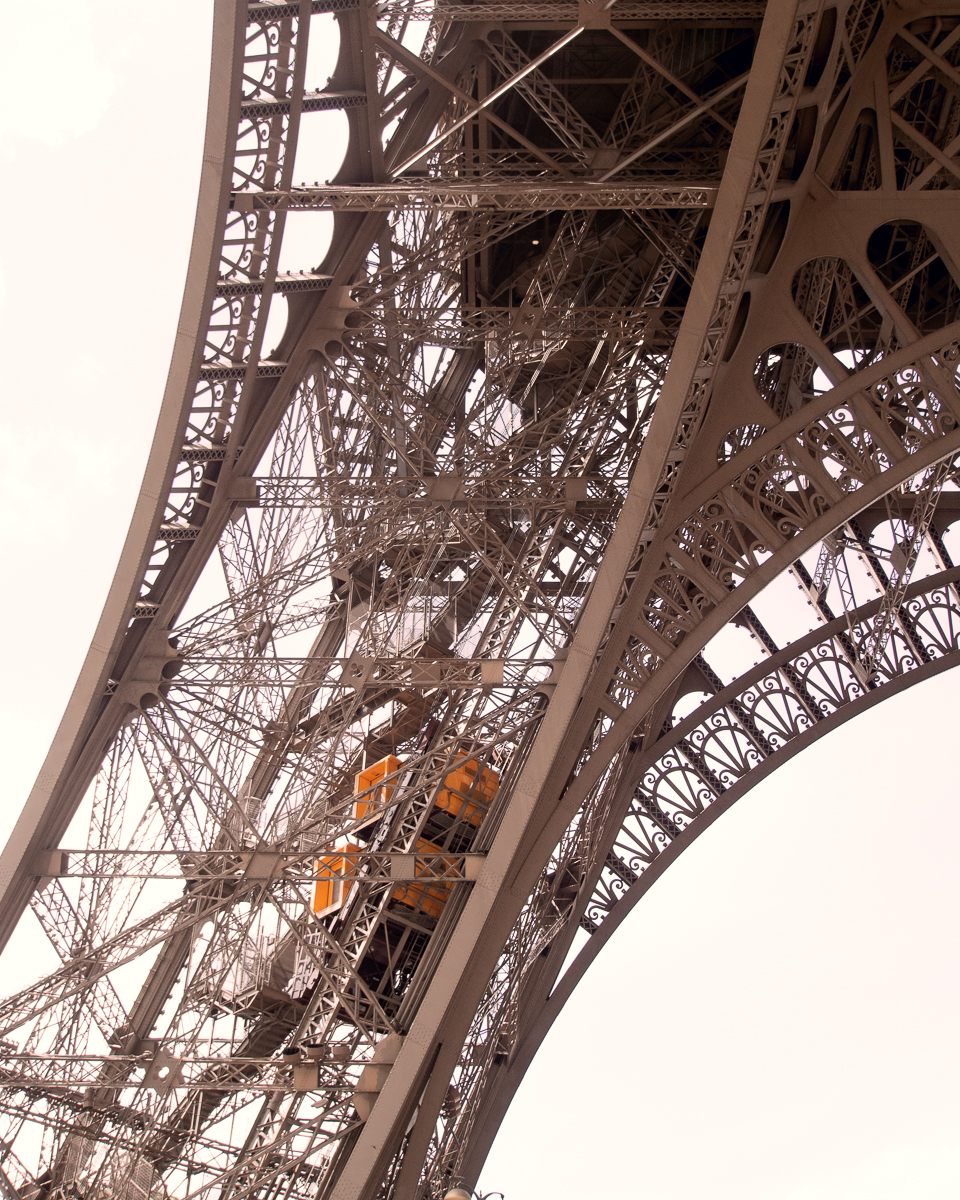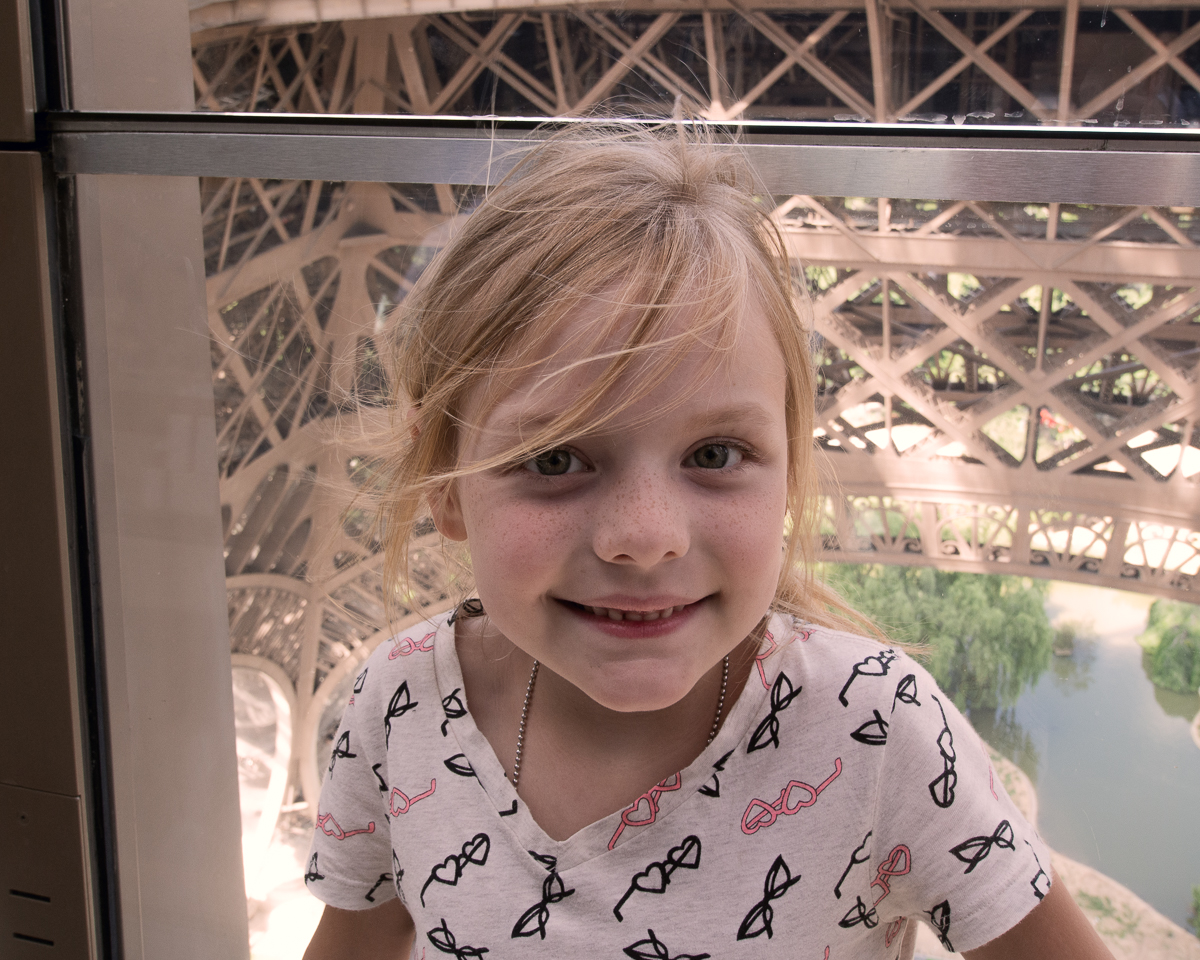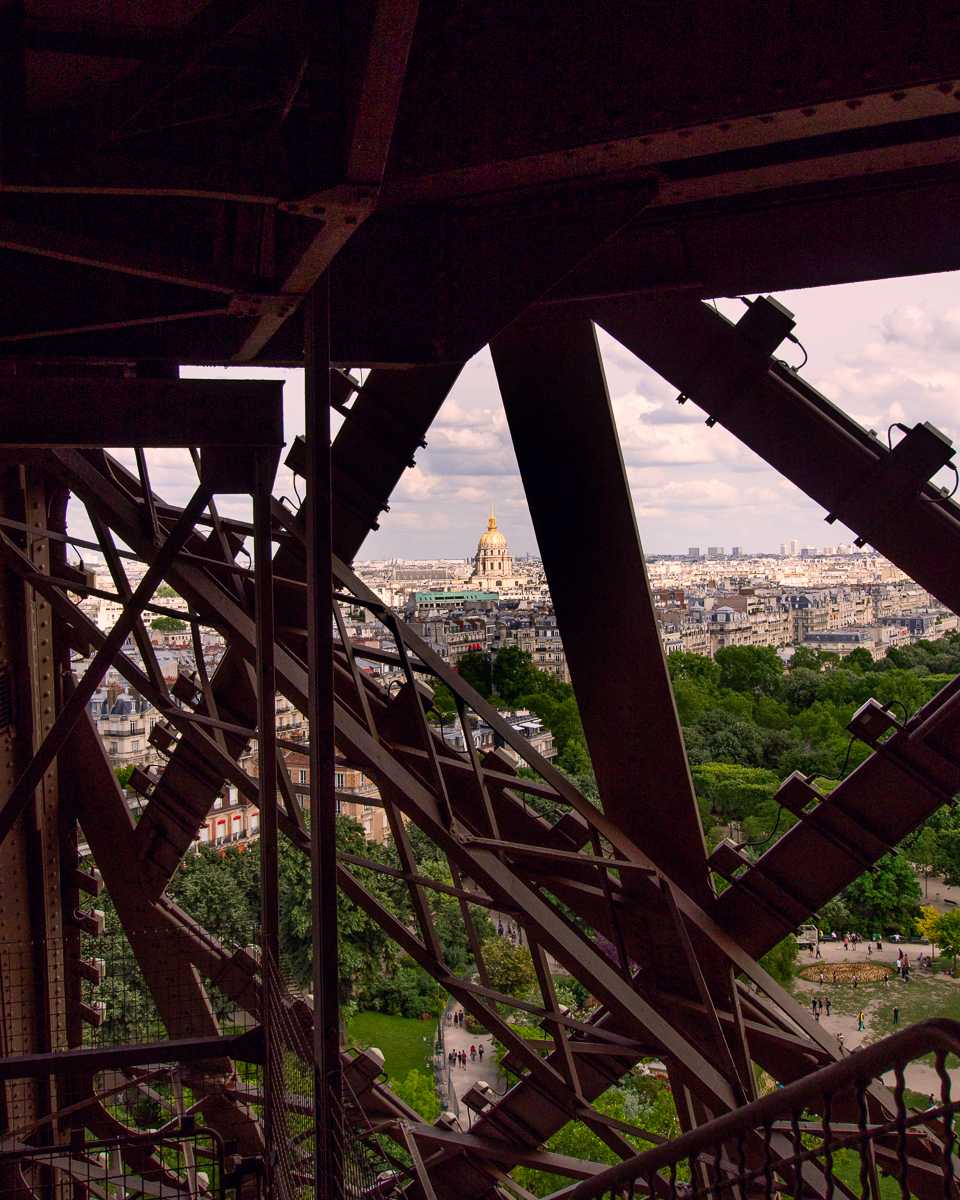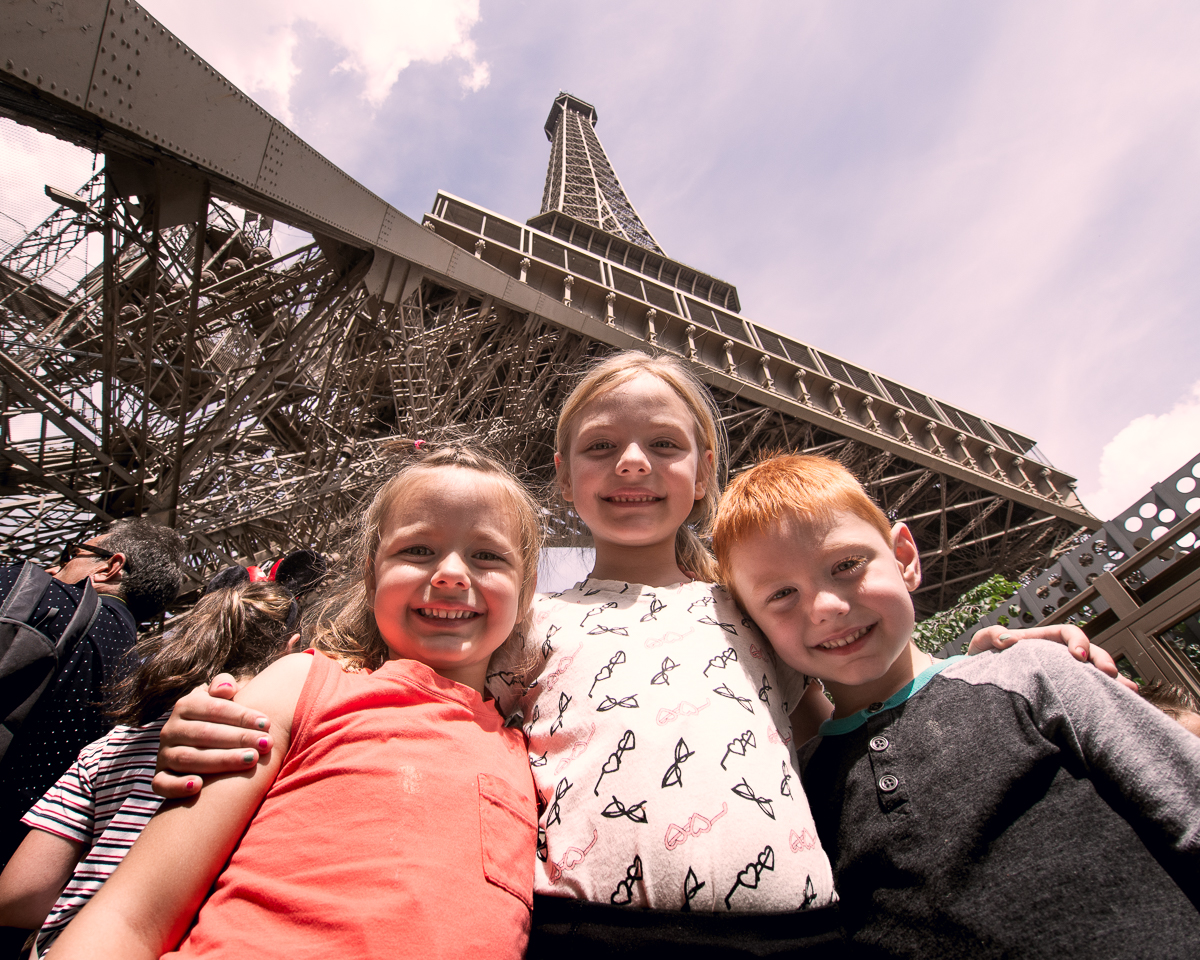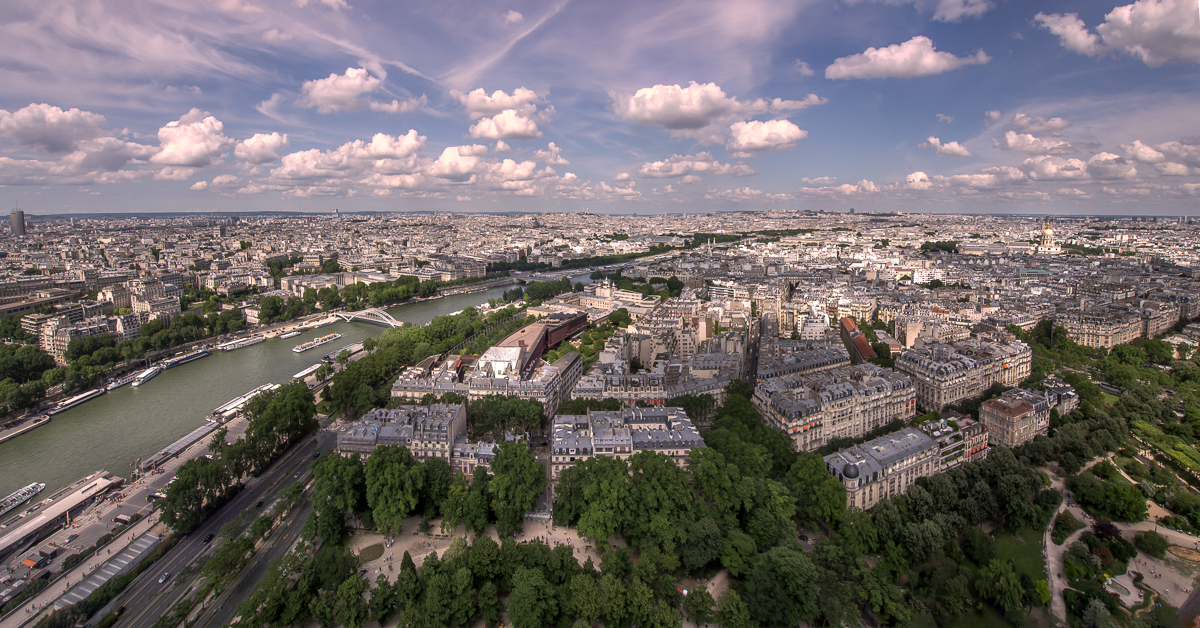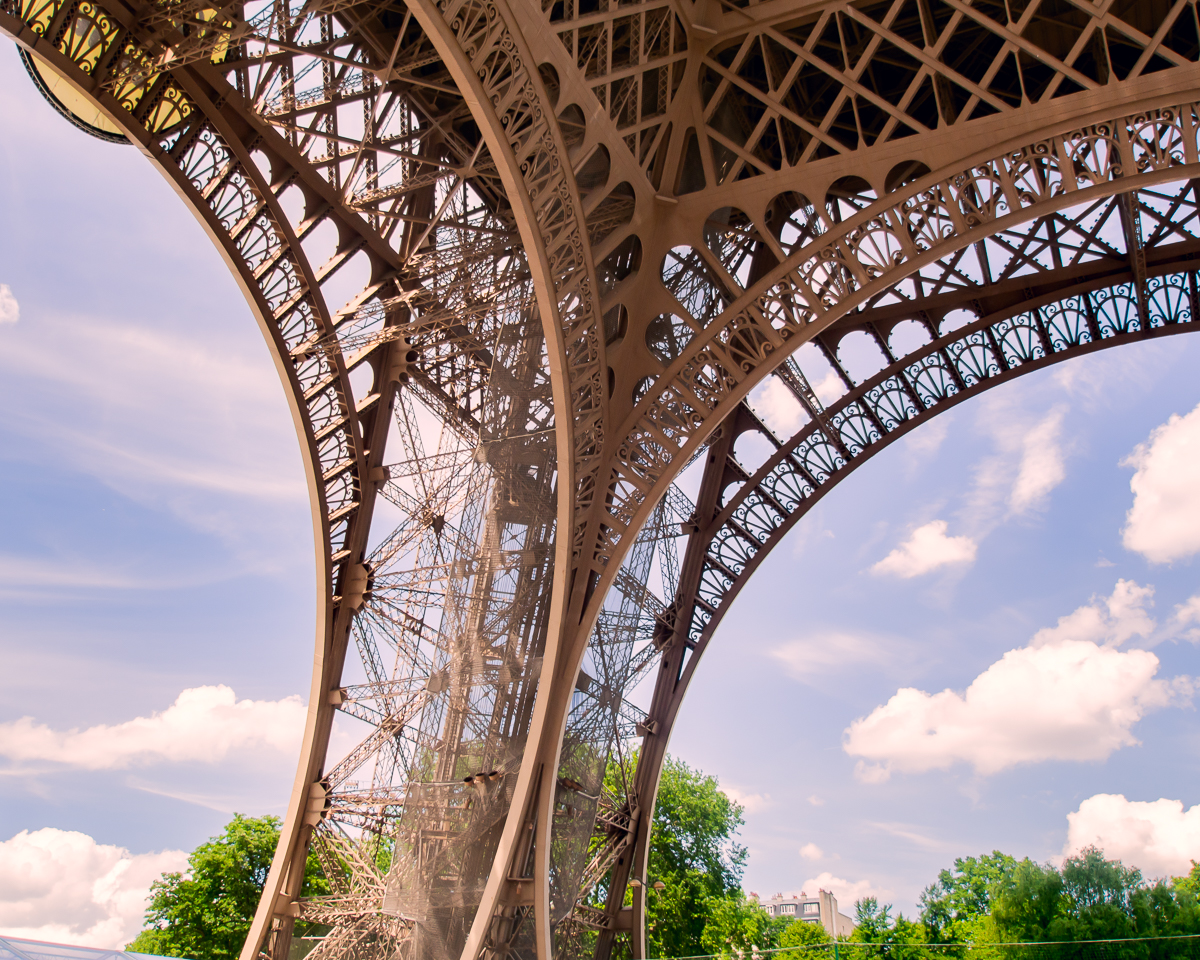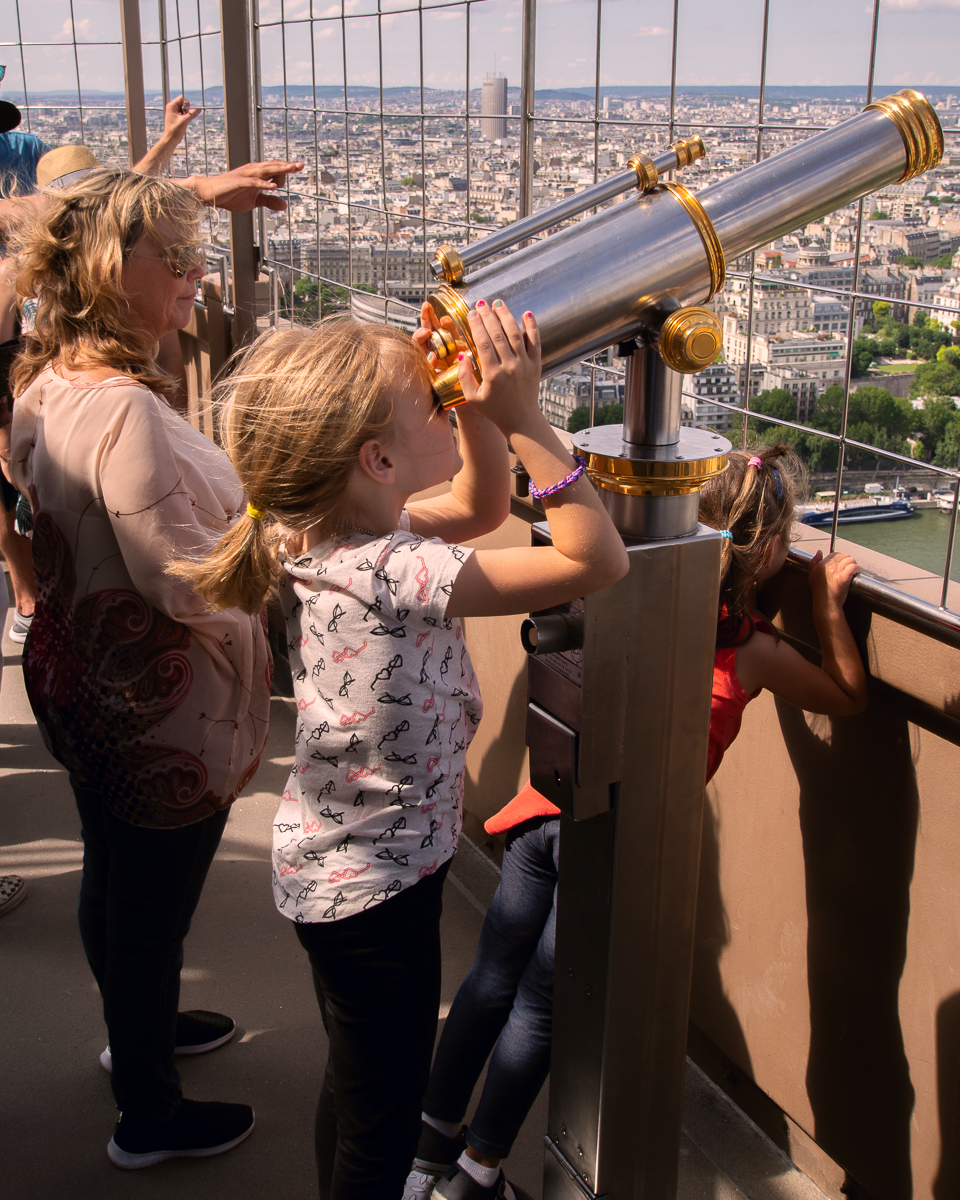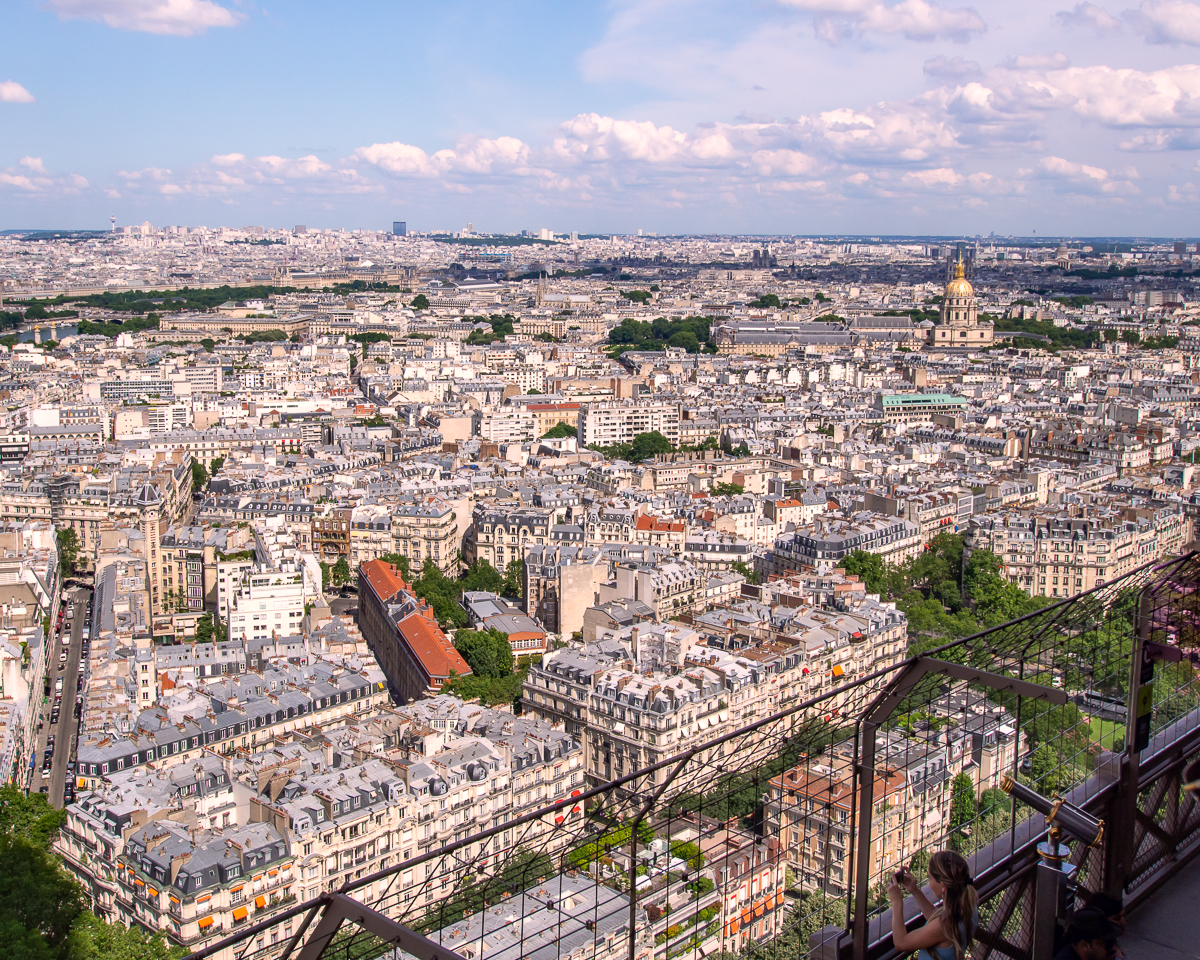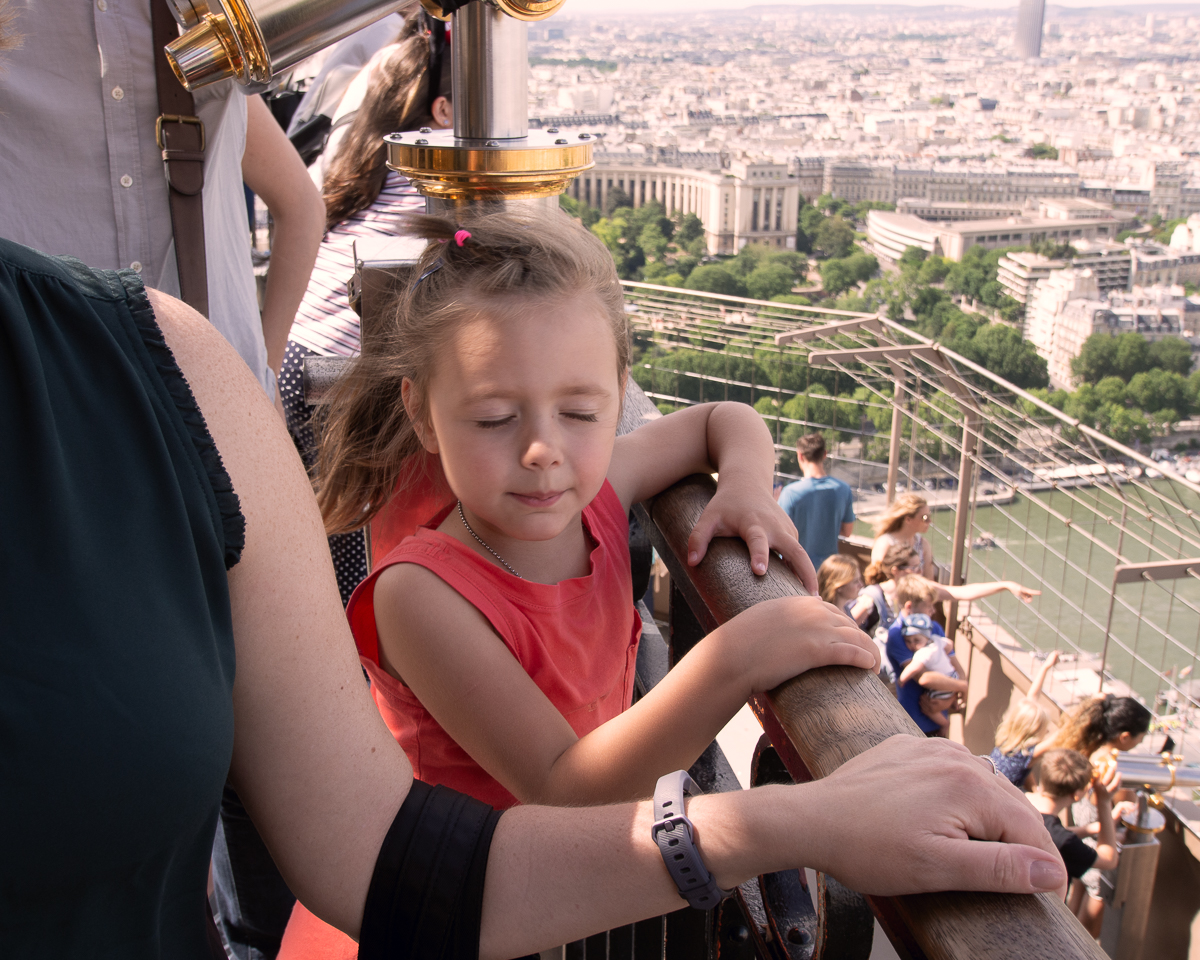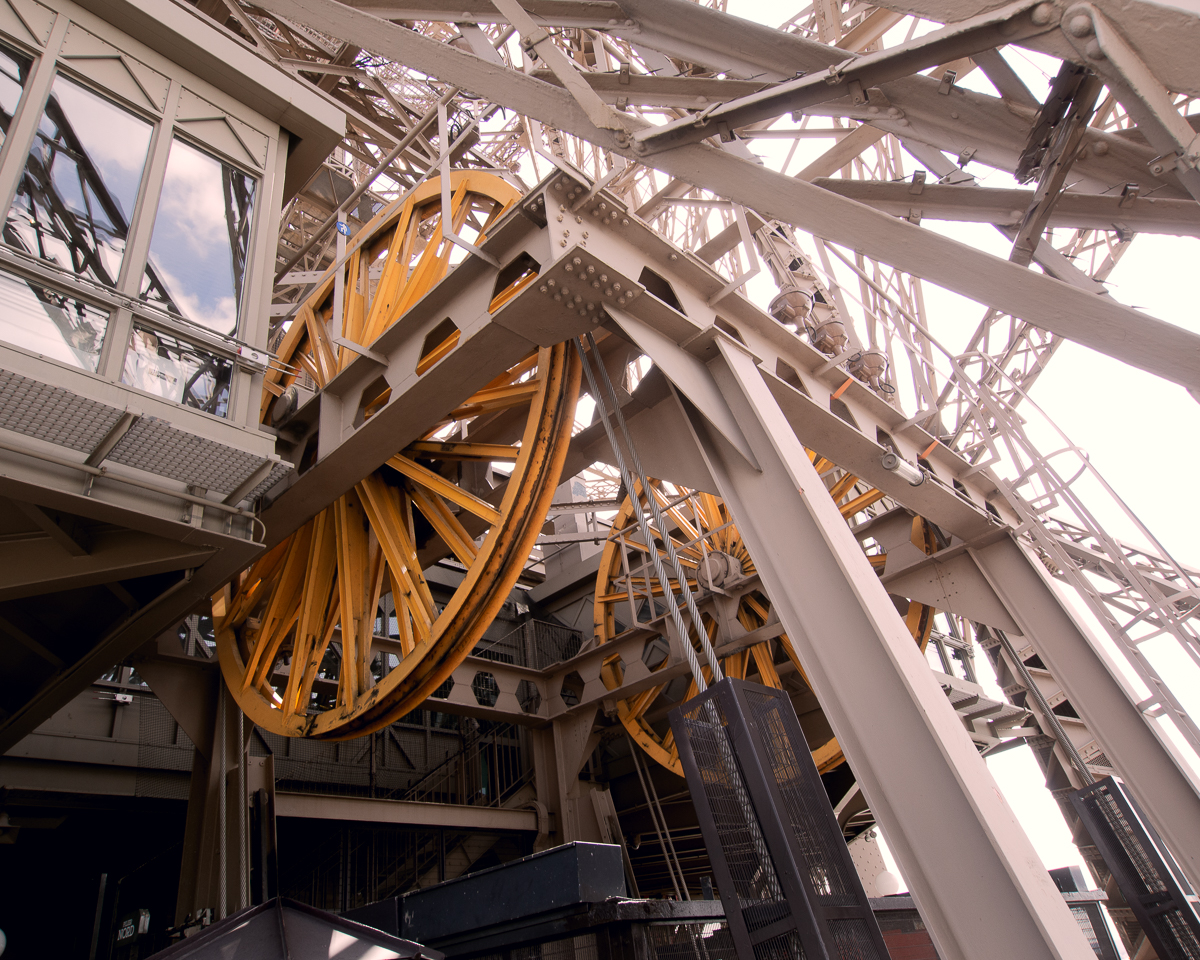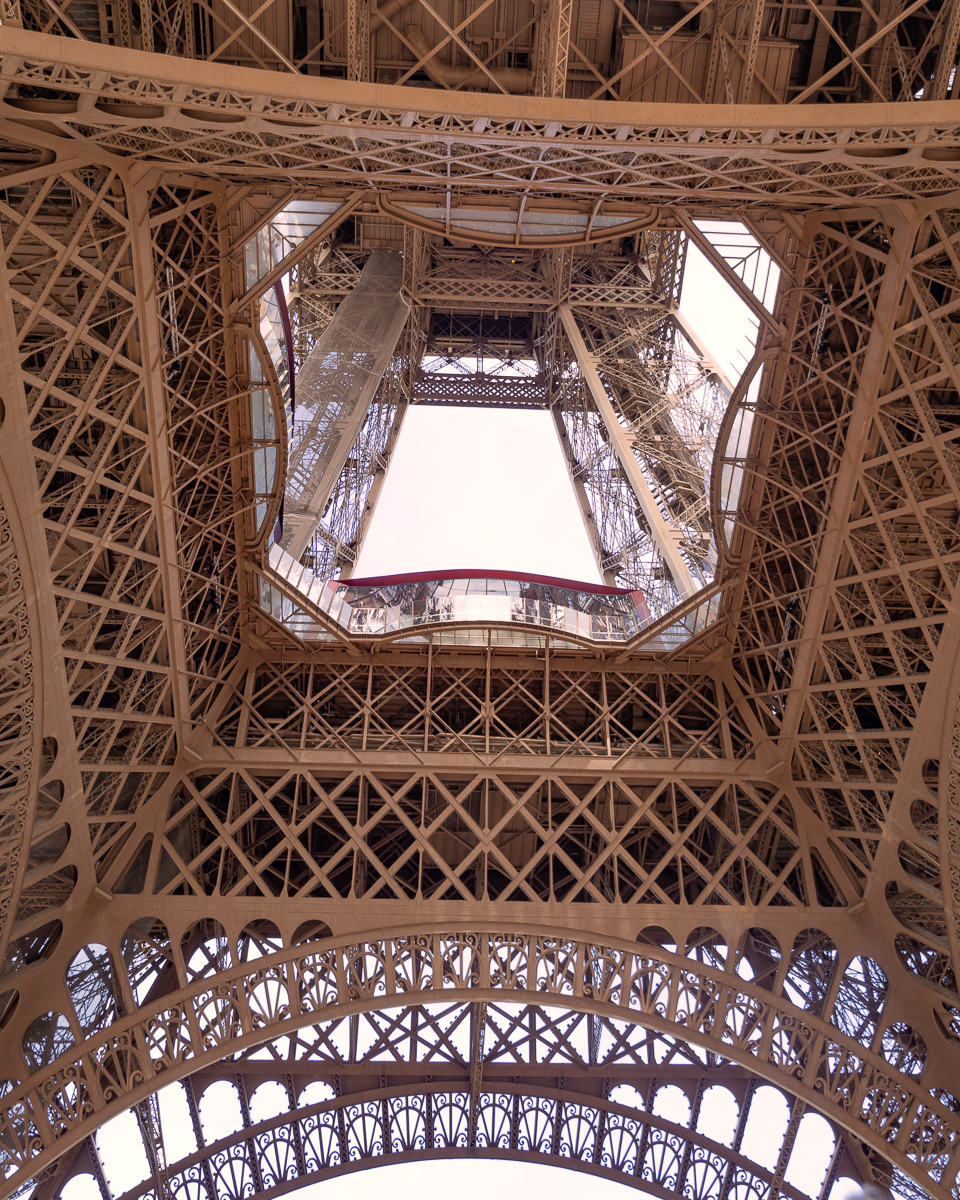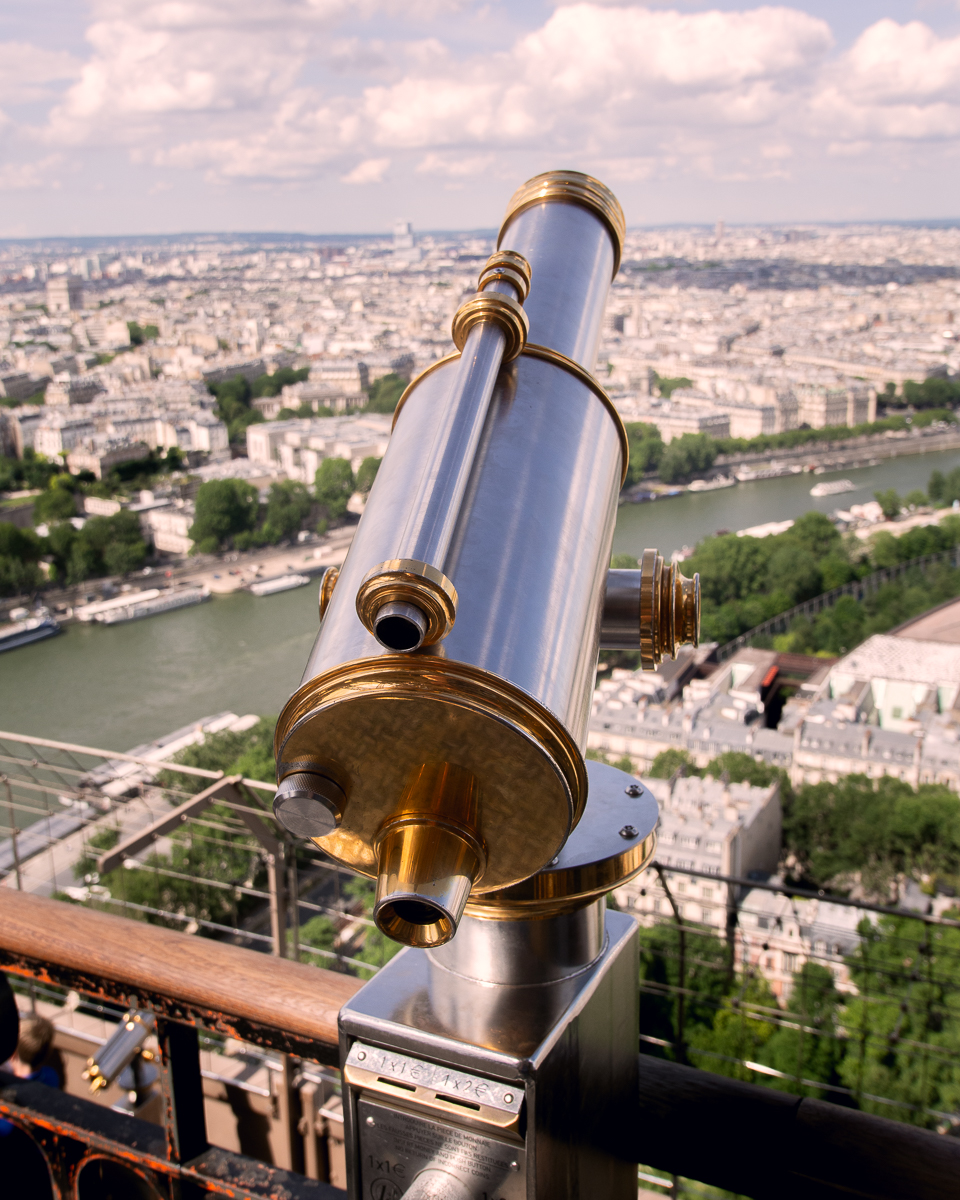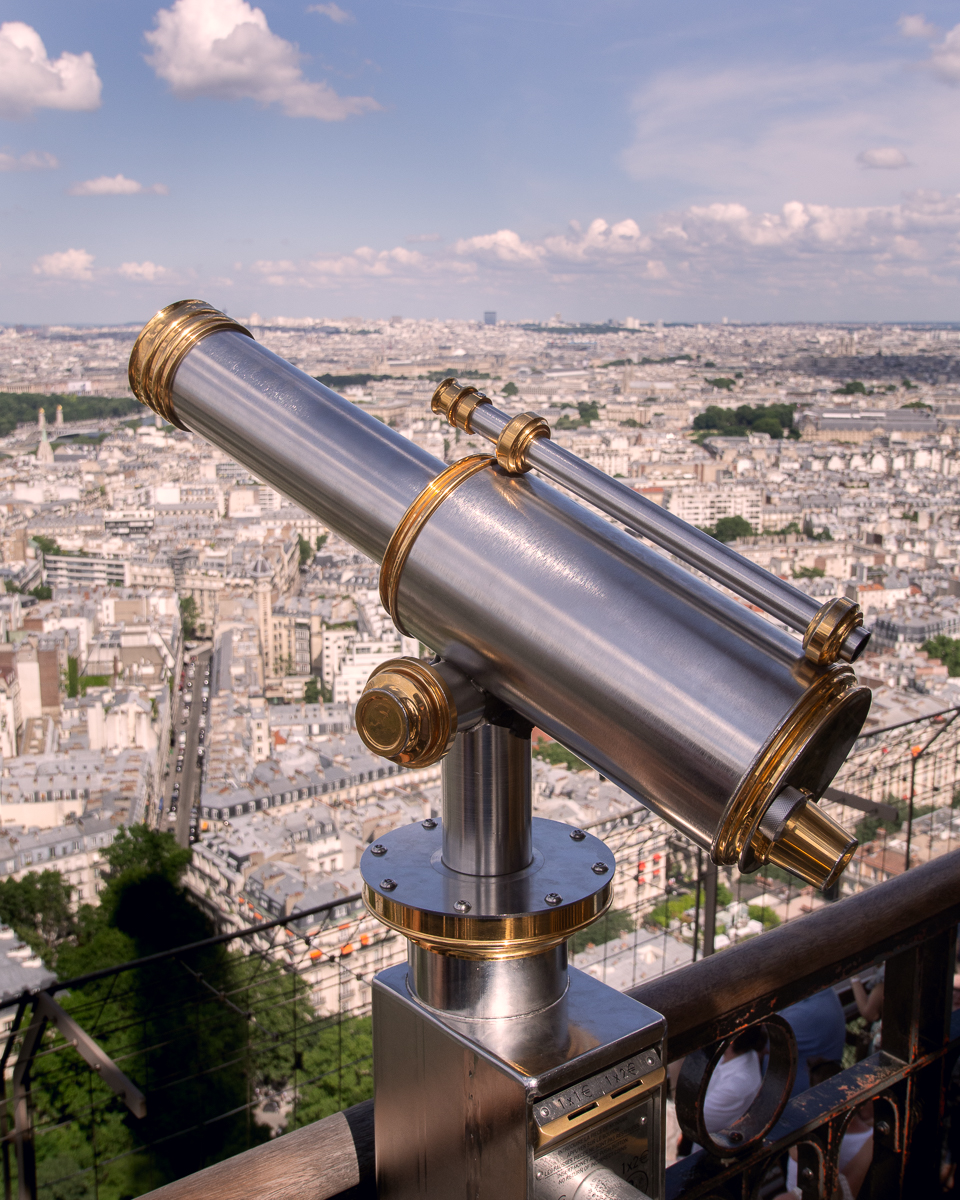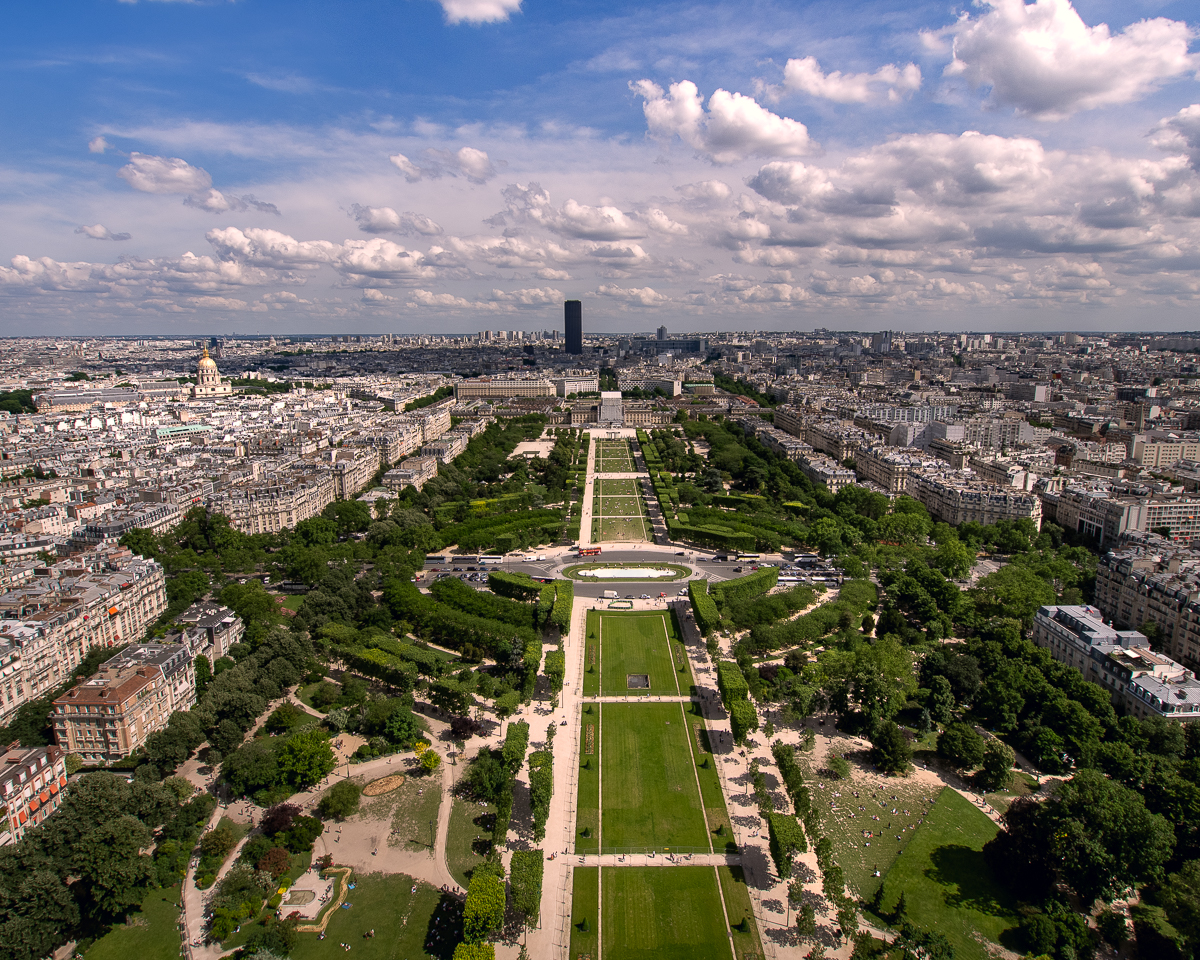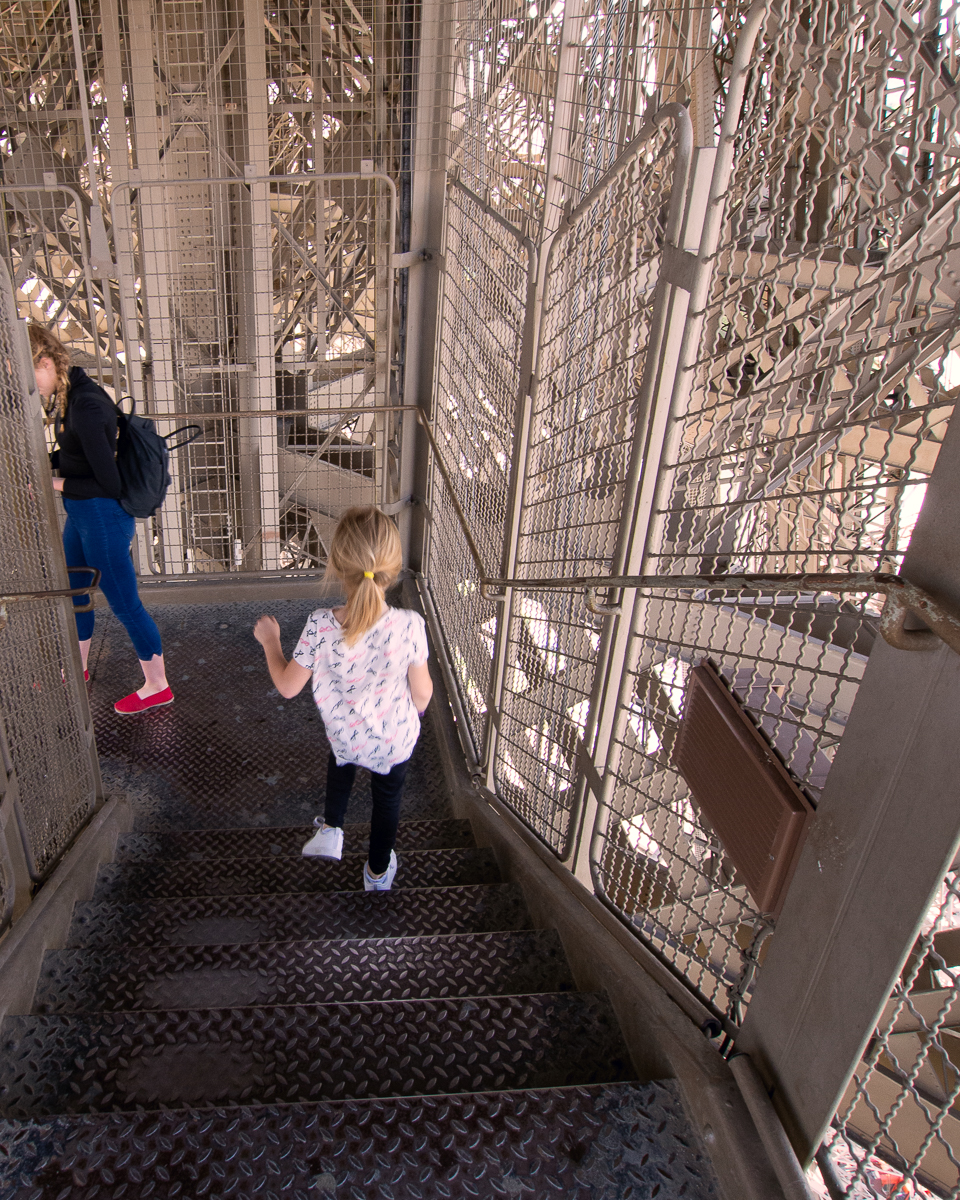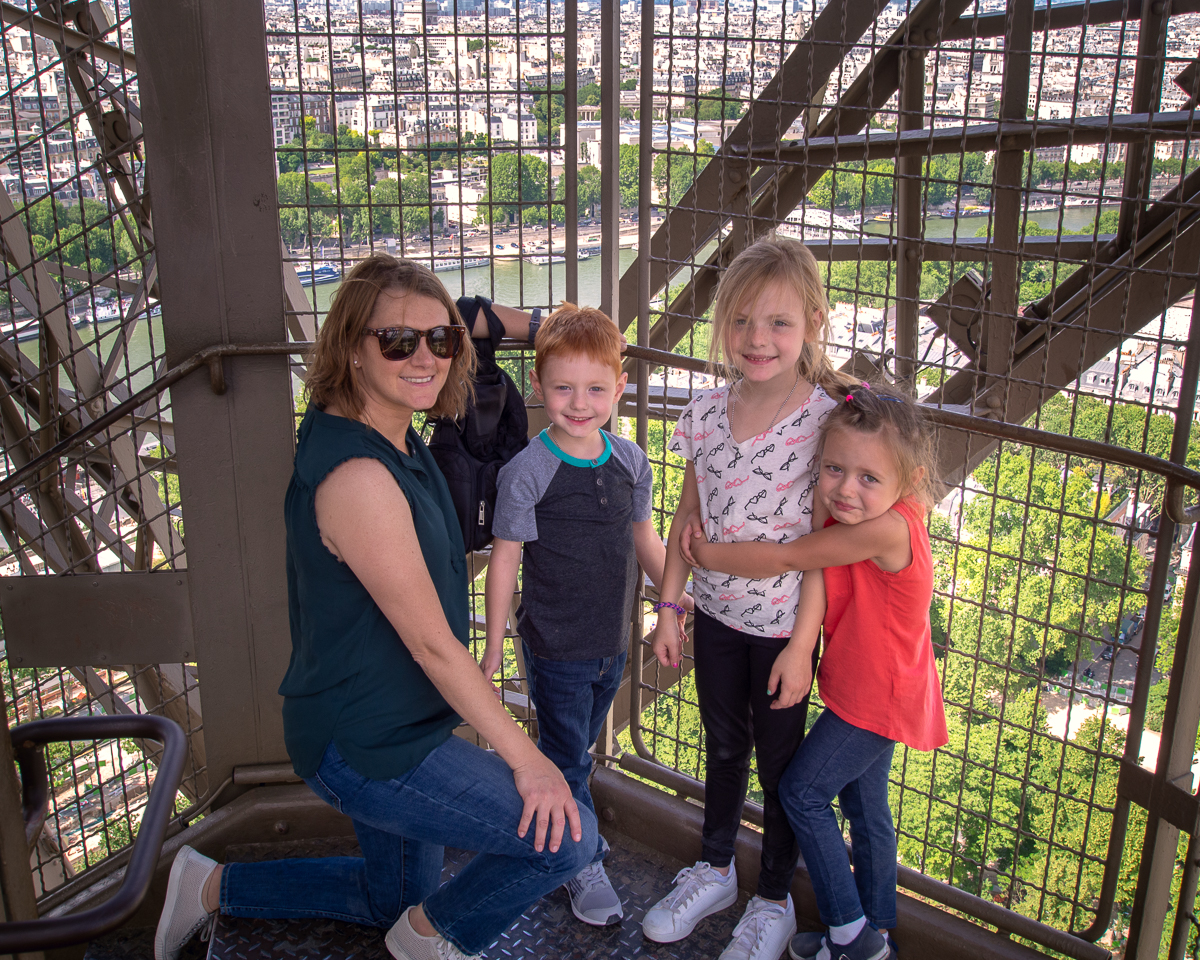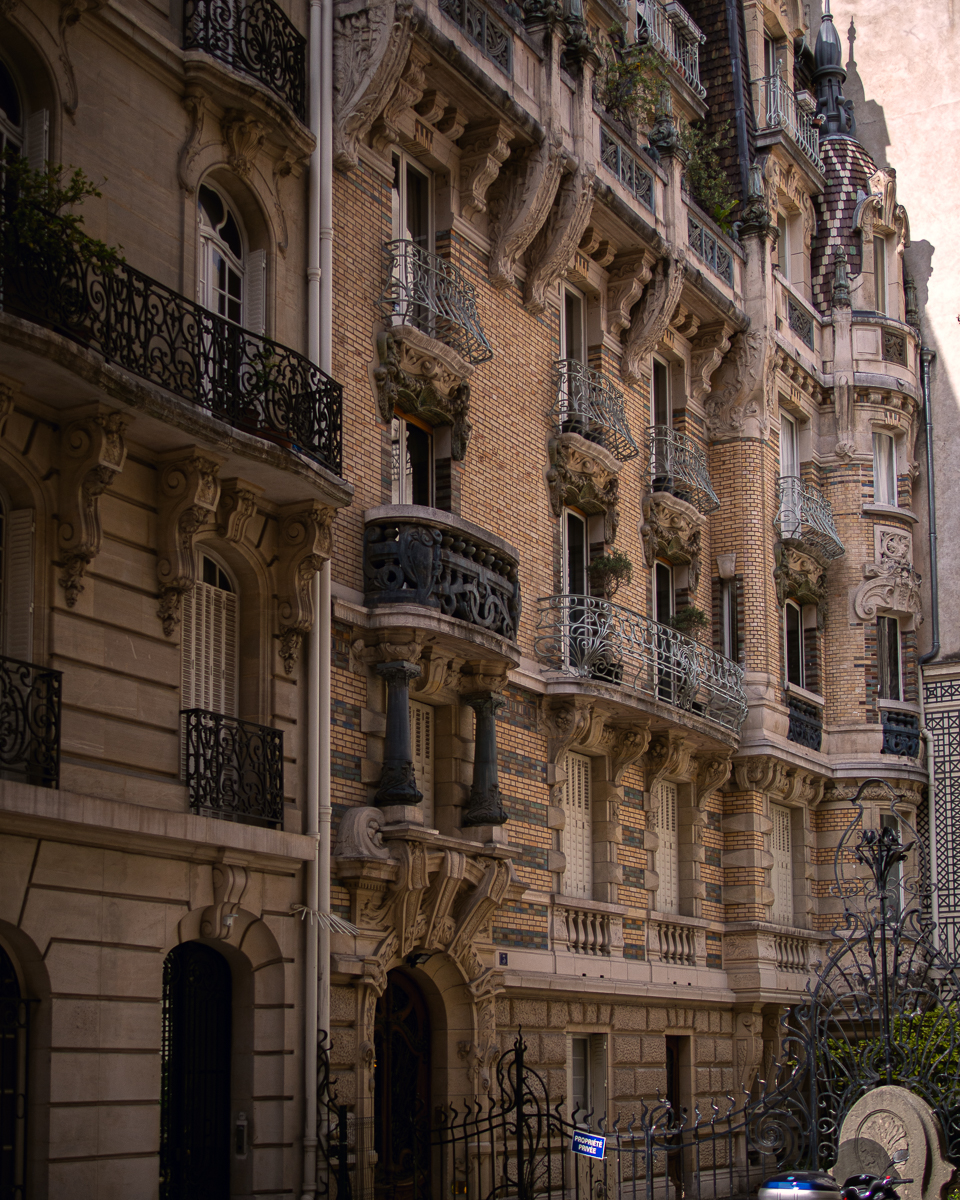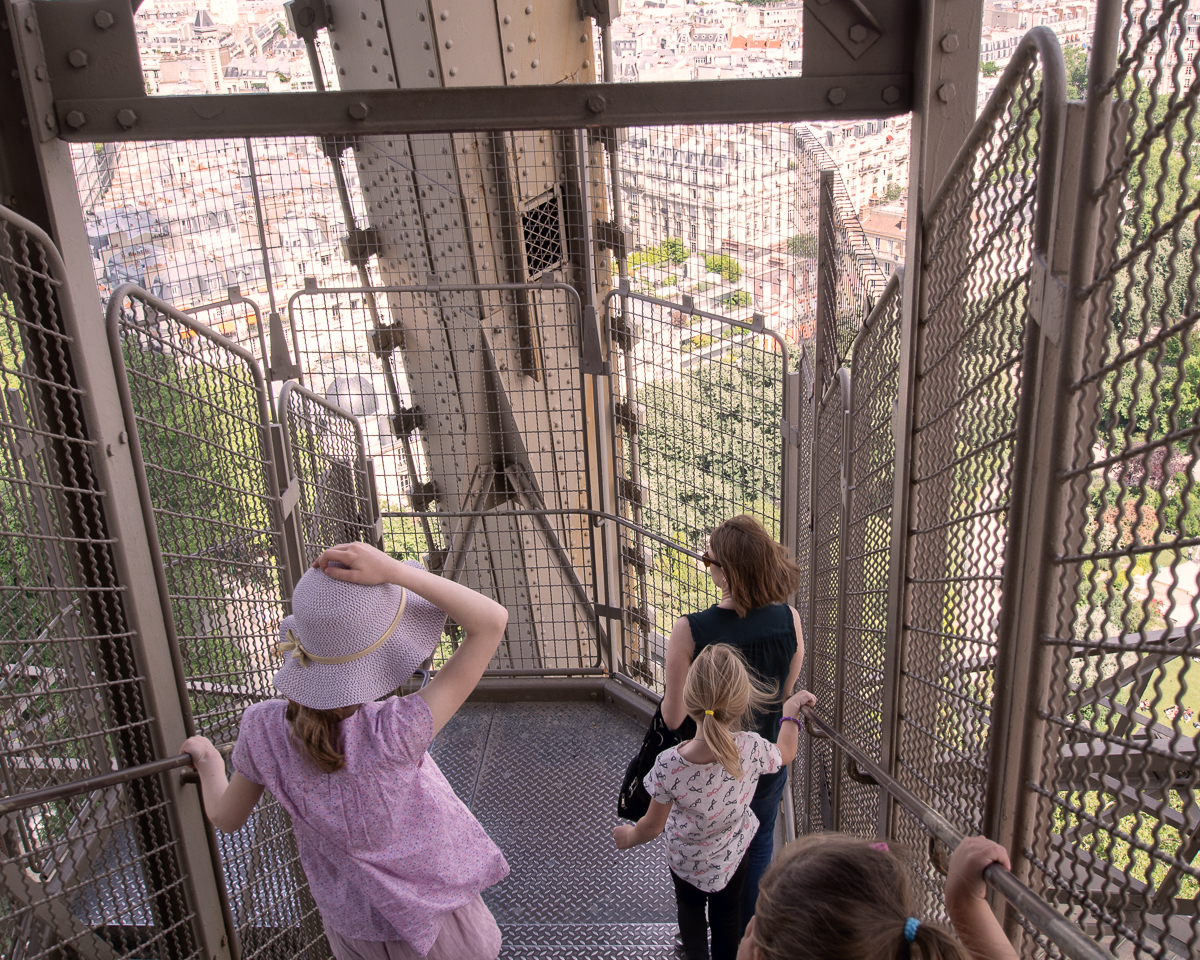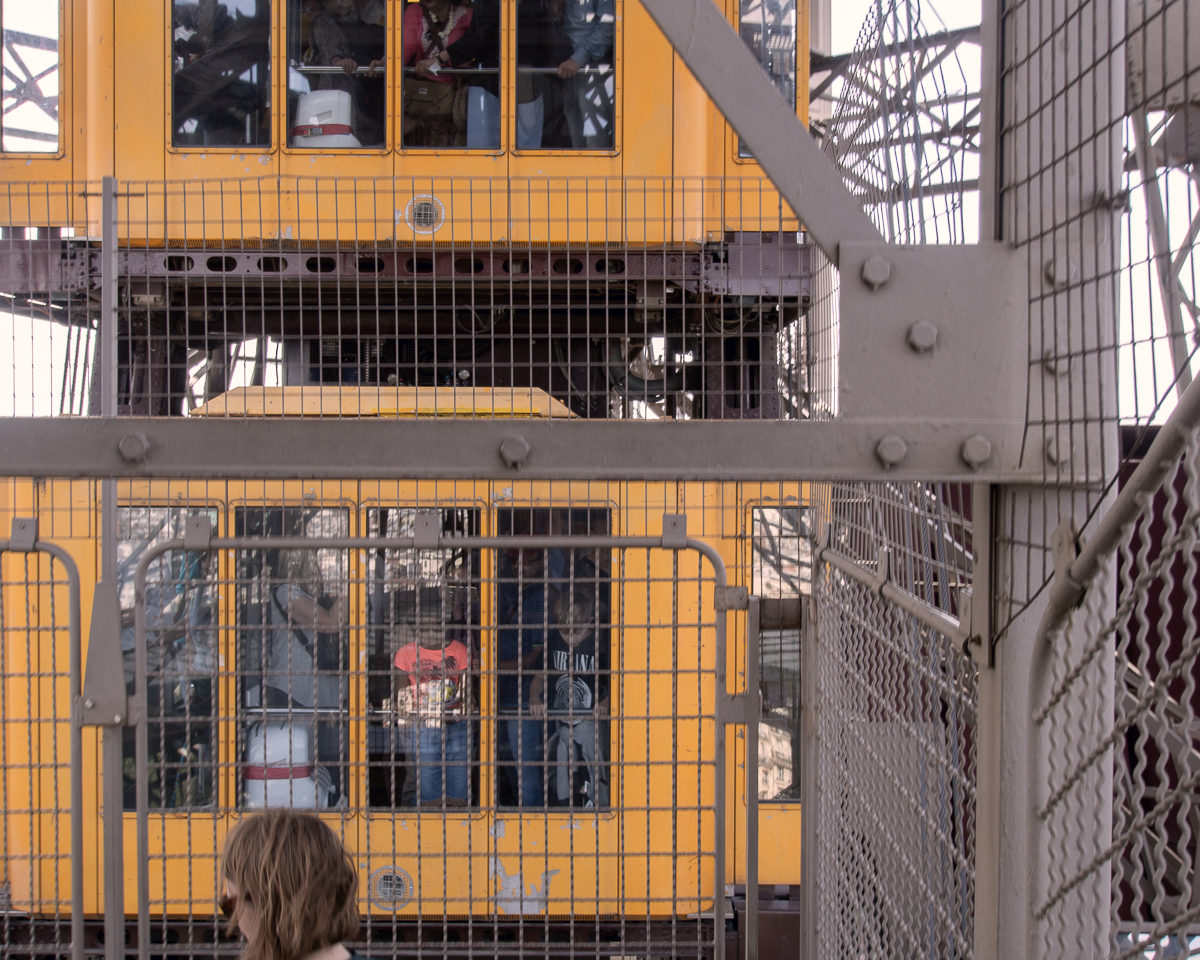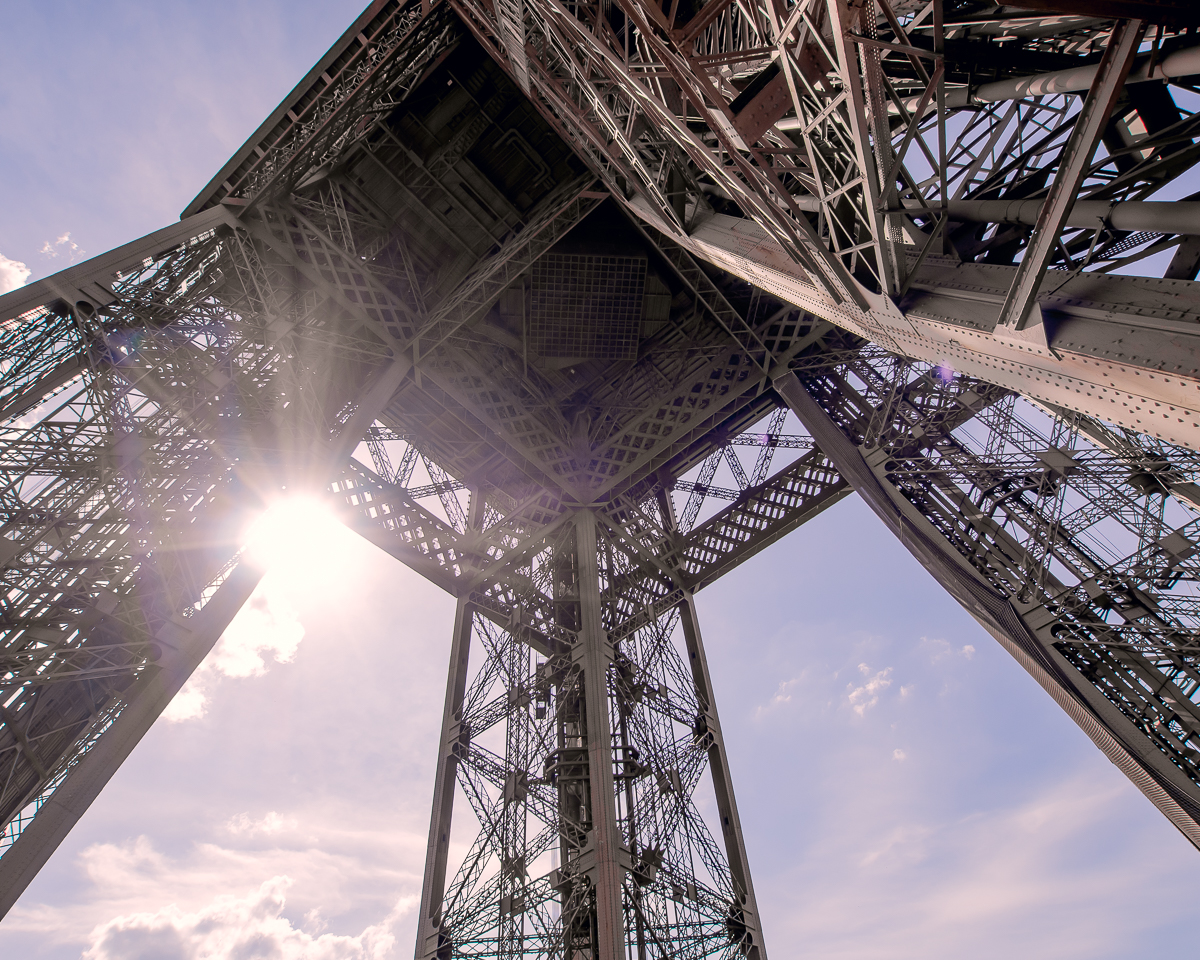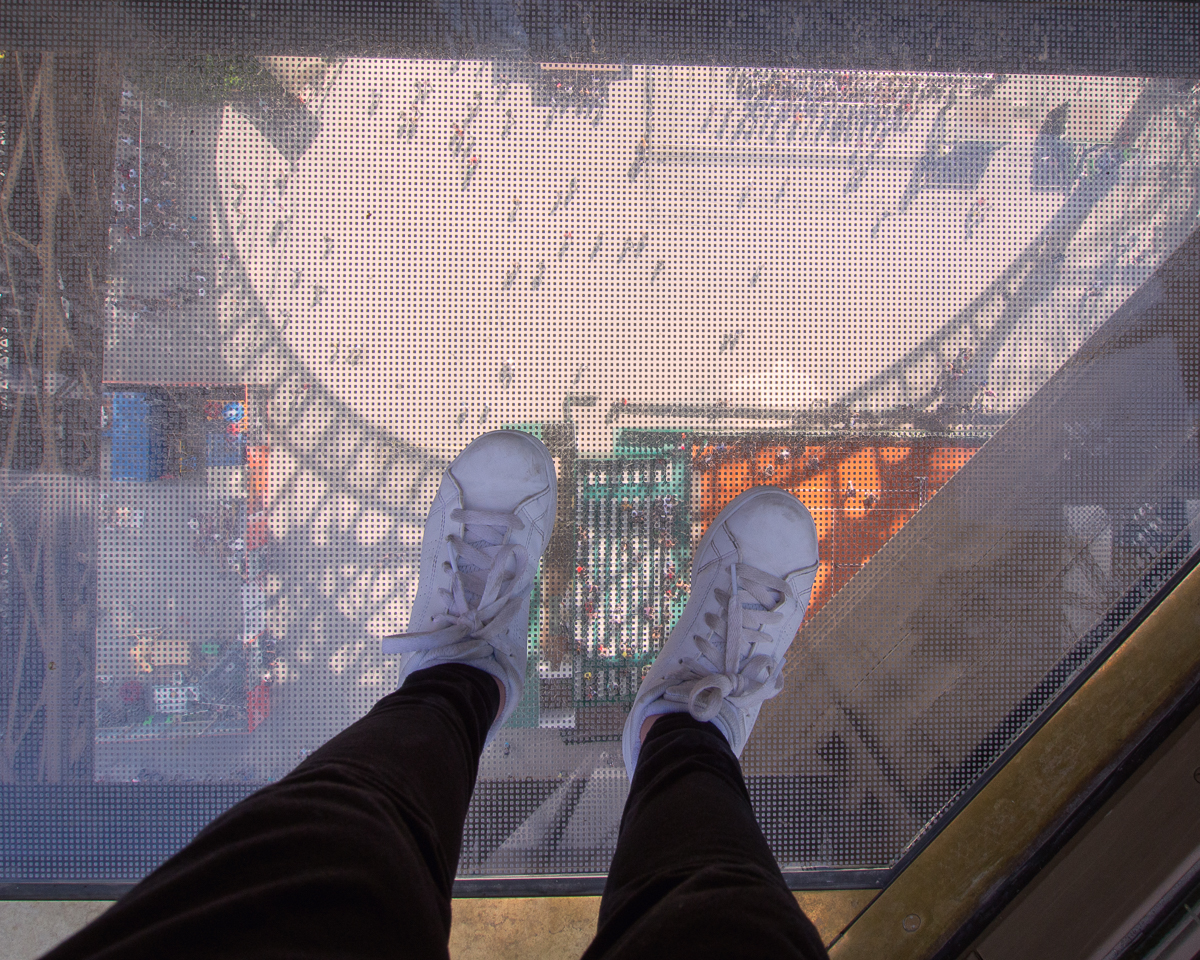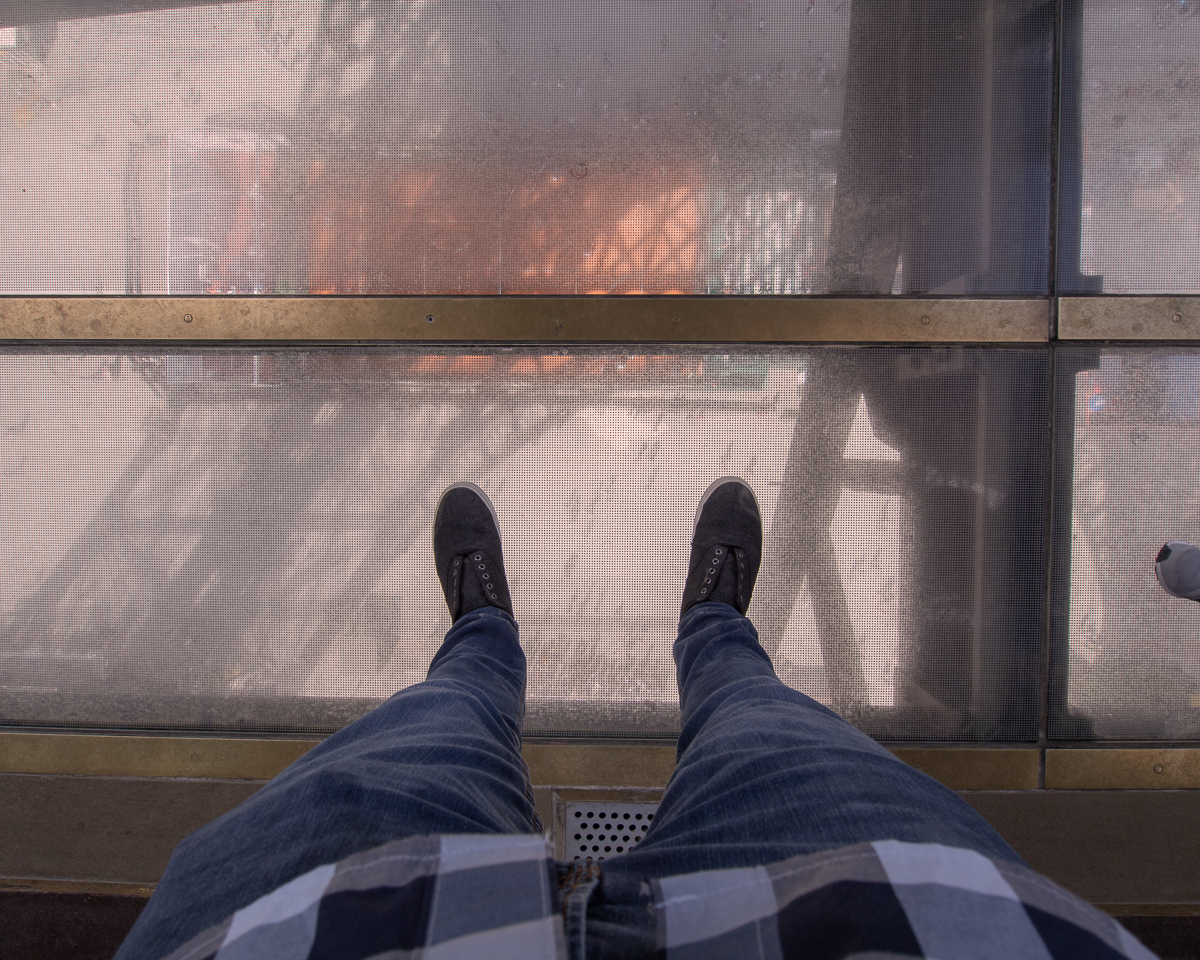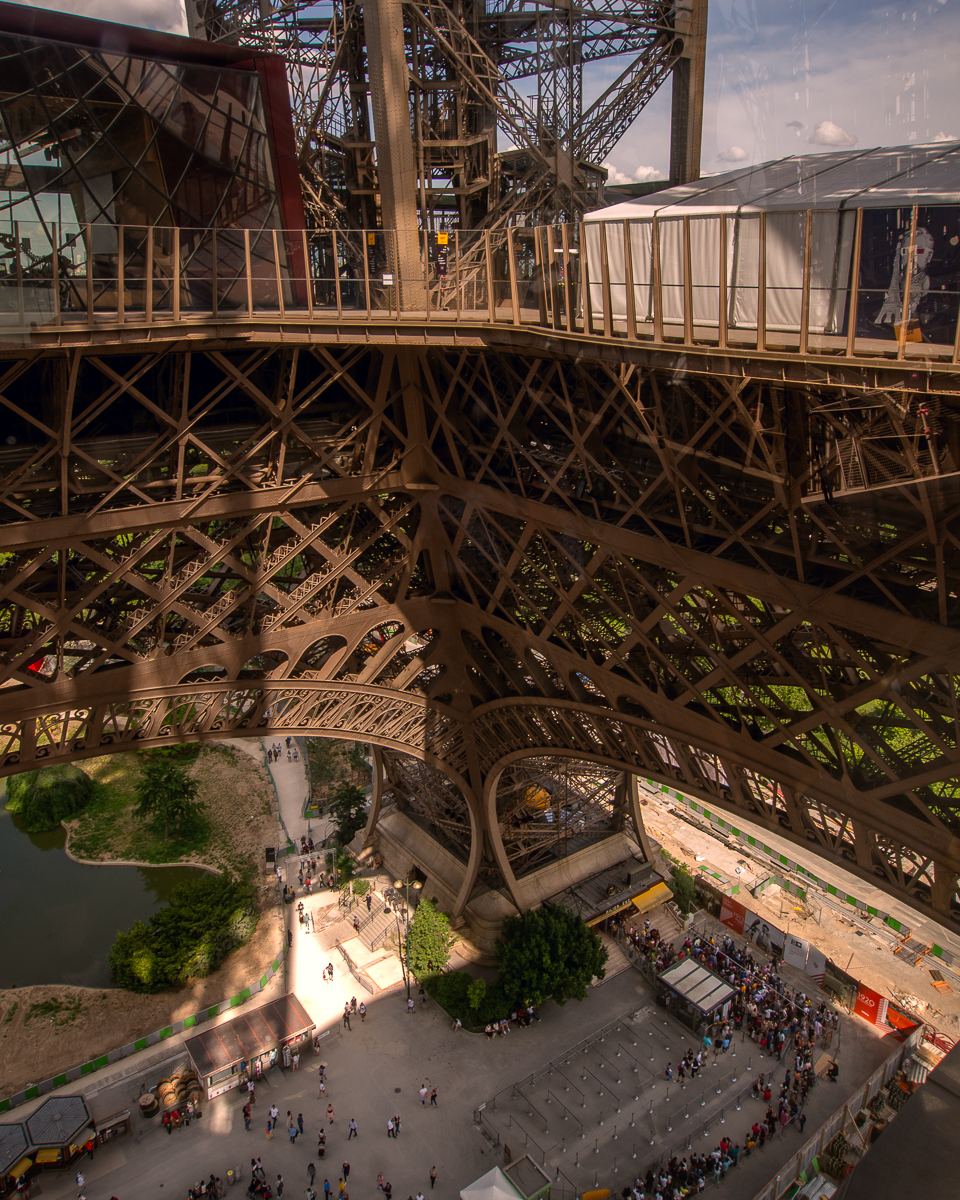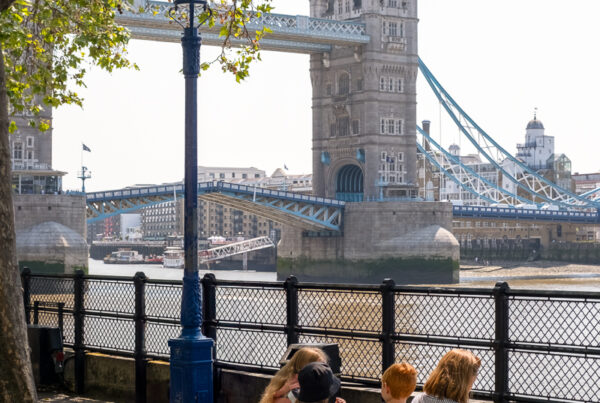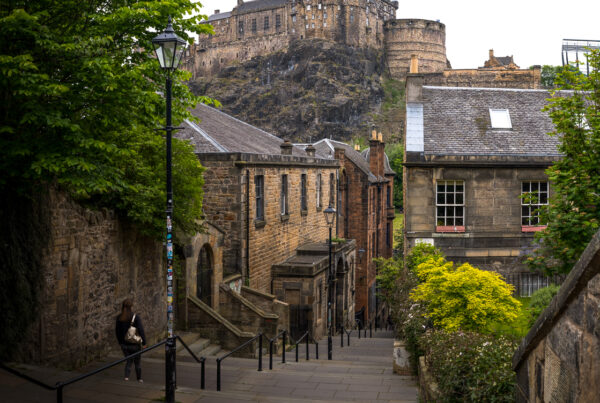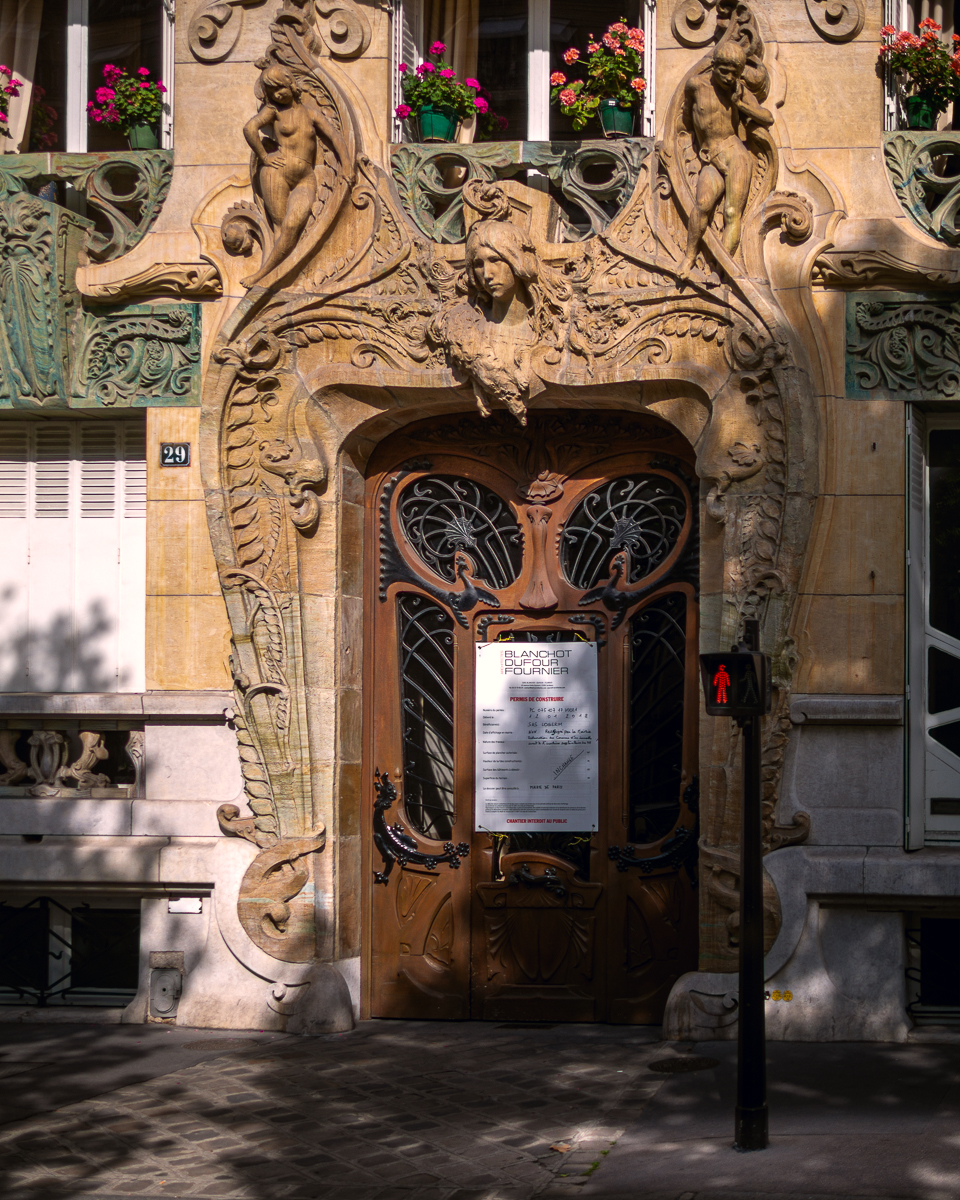 The grand monument grew from over the rooftops like a giant misplaced paperweight. I wondered if it was possible for the tower to be too large as I strained my neck just to get it in view. We had already had a bit of a contentious relationship with the Eiffel Tower long before meeting its acquaintance. Multiple times over the preceding weeks we fought with the online ticketing application. Each attempt was unsuccessful and frustrating. The instructions were clear but the site was uncooperative displaying all the signs of technical failure. As we found ourselves standing in the tower’s shadow without tickets I shyly remained silent about the fact that a Sunday afternoon is the busiest time of the week to visit.
The grand monument grew from over the rooftops like a giant misplaced paperweight. I wondered if it was possible for the tower to be too large as I strained my neck just to get it in view. We had already had a bit of a contentious relationship with the Eiffel Tower long before meeting its acquaintance. Multiple times over the preceding weeks we fought with the online ticketing application. Each attempt was unsuccessful and frustrating. The instructions were clear but the site was uncooperative displaying all the signs of technical failure. As we found ourselves standing in the tower’s shadow without tickets I shyly remained silent about the fact that a Sunday afternoon is the busiest time of the week to visit.
I was still slightly bitter, having fully accepted that we would not be climbing the tower. Being a devout believer in low expectations I was preparing my next best plan – a walkthrough, exiting the north end and heading to the Trocadéro. To my displeasure the kids repeatedly asked if we would be going inside the tower every time it entered their persistent minds. I had been assuring them, as best I could, that I had an equally enjoyable plan. I was confident they would hardly feel that unparalleled views of the tower and a possible toe dip in the fountains would be an inferior consolation.
The delicate and lacy ironwork of the structure is elegant and airy. It greatly reduces the tower’s mass which truly is jarring. Had it not been beautiful it would still be a force, for its sheer size absolutely dominates this corner of the city. Counter balancing the low five-story buildings of the neighborhood with their heavy stone the tower’s soaring height and skeletal lightness create one of the great complementary juxtapositions.
The Eiffel Tower is the purest embodiment of the industrial revolution – industry meets art meets ambition meets optimism. So radical when it was built it touched nerves and hearts to explosive degrees. Just a generation prior to its construction Paris was nearly entirely rebuilt with uniform architecture and strict height restrictions. It’s hard to imagine still that the tower was always intended to be a temporary installation, to be dismantled an insufficient twenty years after the world exposition for which it was built. However, the righteous eventually prevailed and it was spared the wrecking ball.
Less, however, can be said for the chain-link scared dust patch that lies at its feet. The Champs de Mar is a tourist trampled no-man’s-land like abused terrain after a buffalo stampede. The eyesore continues with makeshift security checkpoints that seem to have been cobbled together over the years to meet the immediate needs of the present. The outermost security to gain access to the footprint of the tower is a hodgepodge of plexiglass barriers and metal detectors operated by loitering teenagers. One of the four guards lazily grabbed the TSA approved corkscrew that Amanda carried in her bag, even on the flight. She passed it to a colleague leaning on a table who proceeded to unsheathe it, study it and then make a few murderous jabbing gestures into the chest of a third bored colleague. At the end of his expertly scientific evaluation he shook his head, handed the weapon back to Amanda who then chucked it directly into a garbage can with an eye roll not meant for anyone to see. The poor bottle opener never had a single sip of French wine.
I stumbled and stammered my way about with eyes firmly affixed to the iron work above. Following blindly I suddenly realized Amanda had led us directly to the ticket line. Before I could suggest the effort would be futile, I noticed that the line appeared to be short. Extremely short. All of my preparation and research told me this was impossible, and I almost argued the defeatist point denying the reality before us. Had all my planning simply been for naught? The kids dream of “going inside” the Eiffel Tower would be realized after all.



